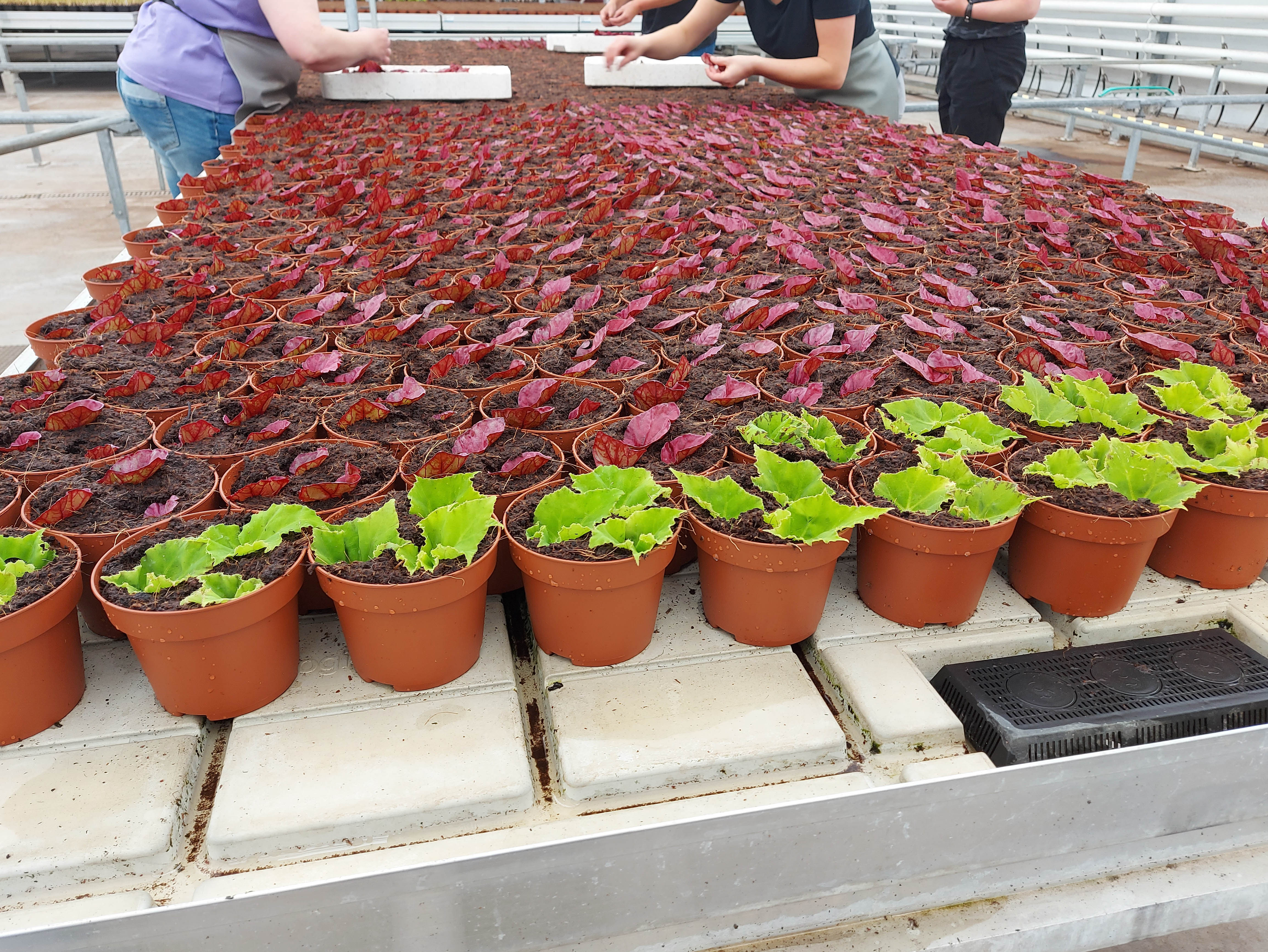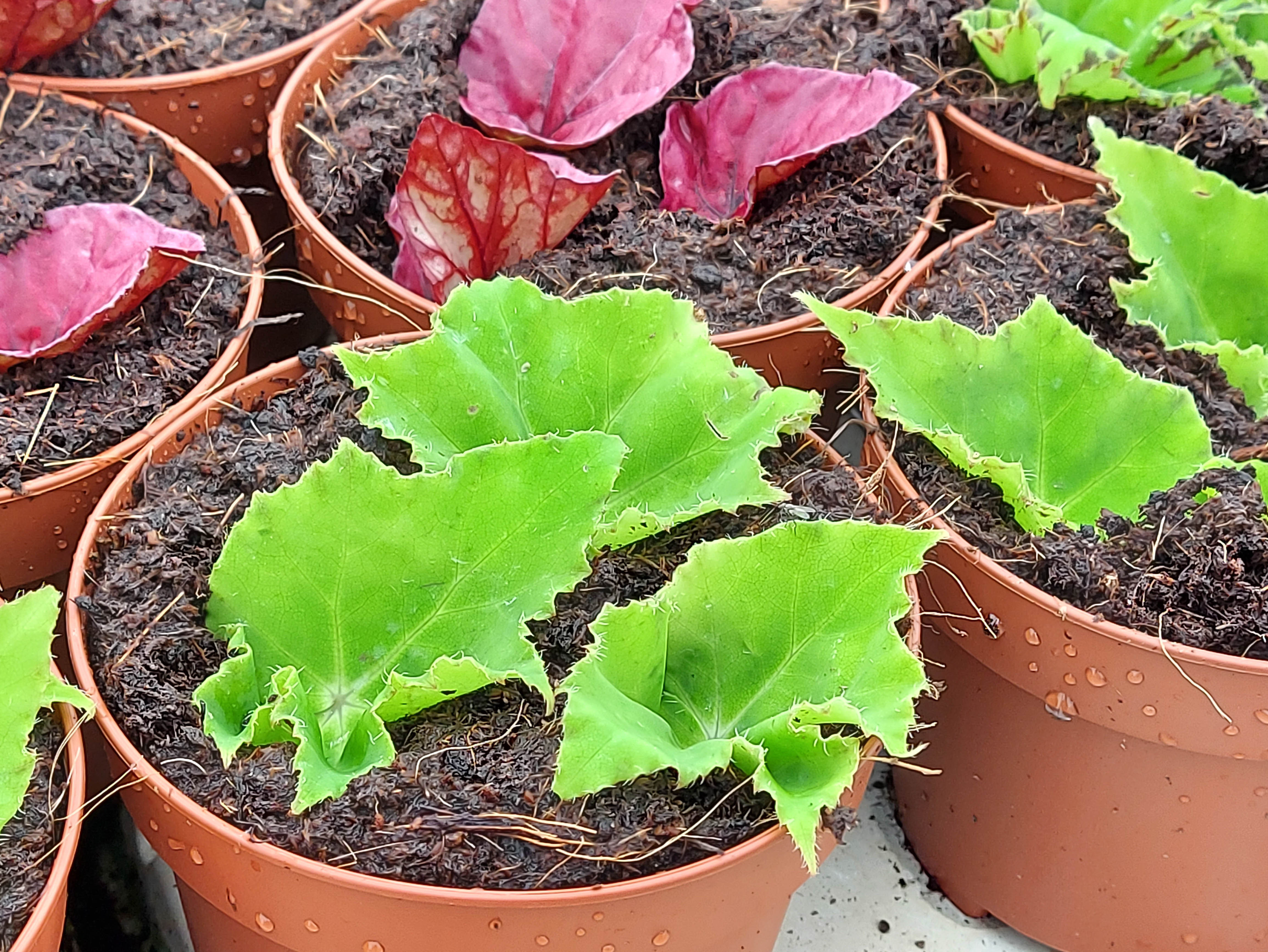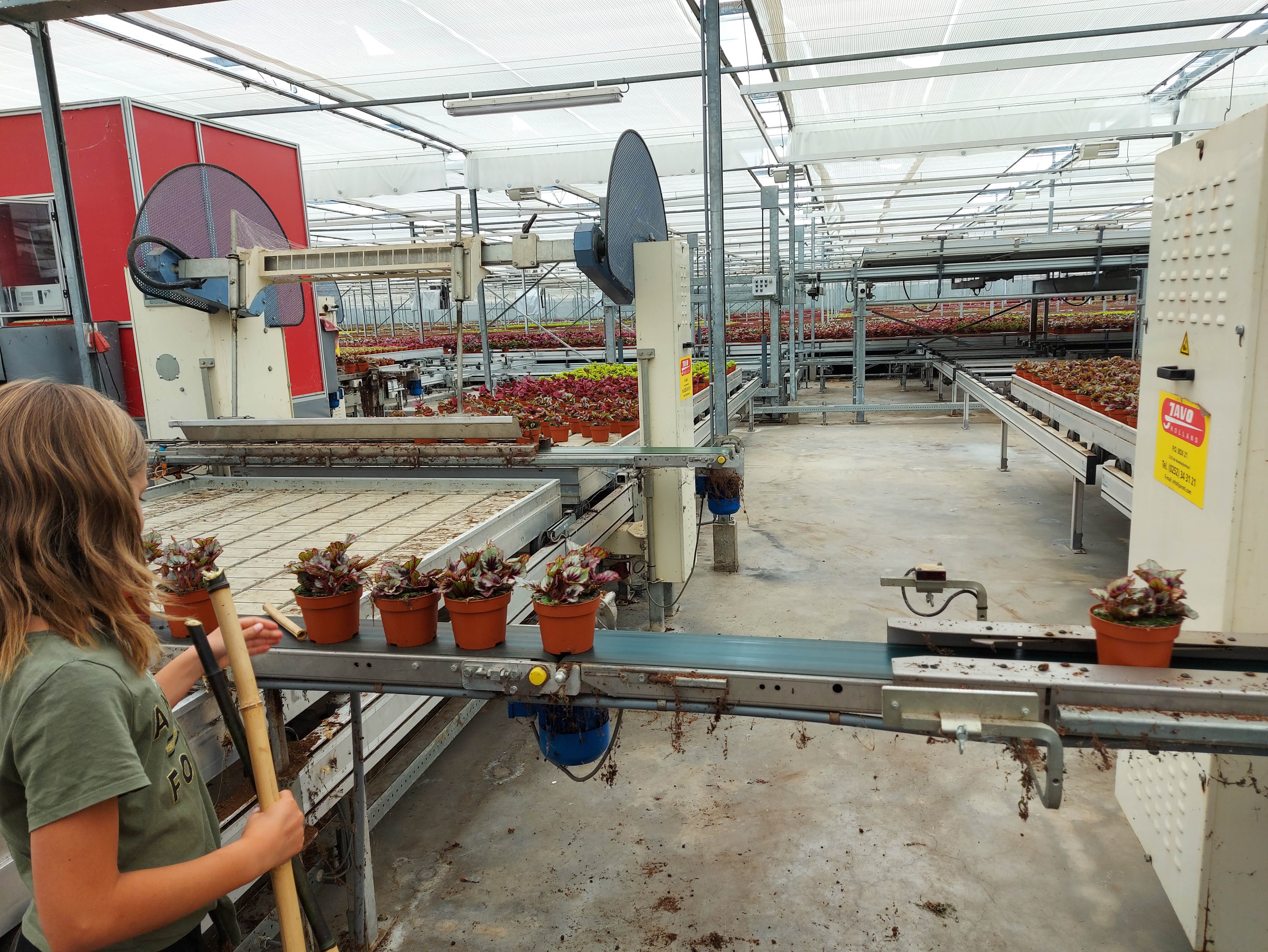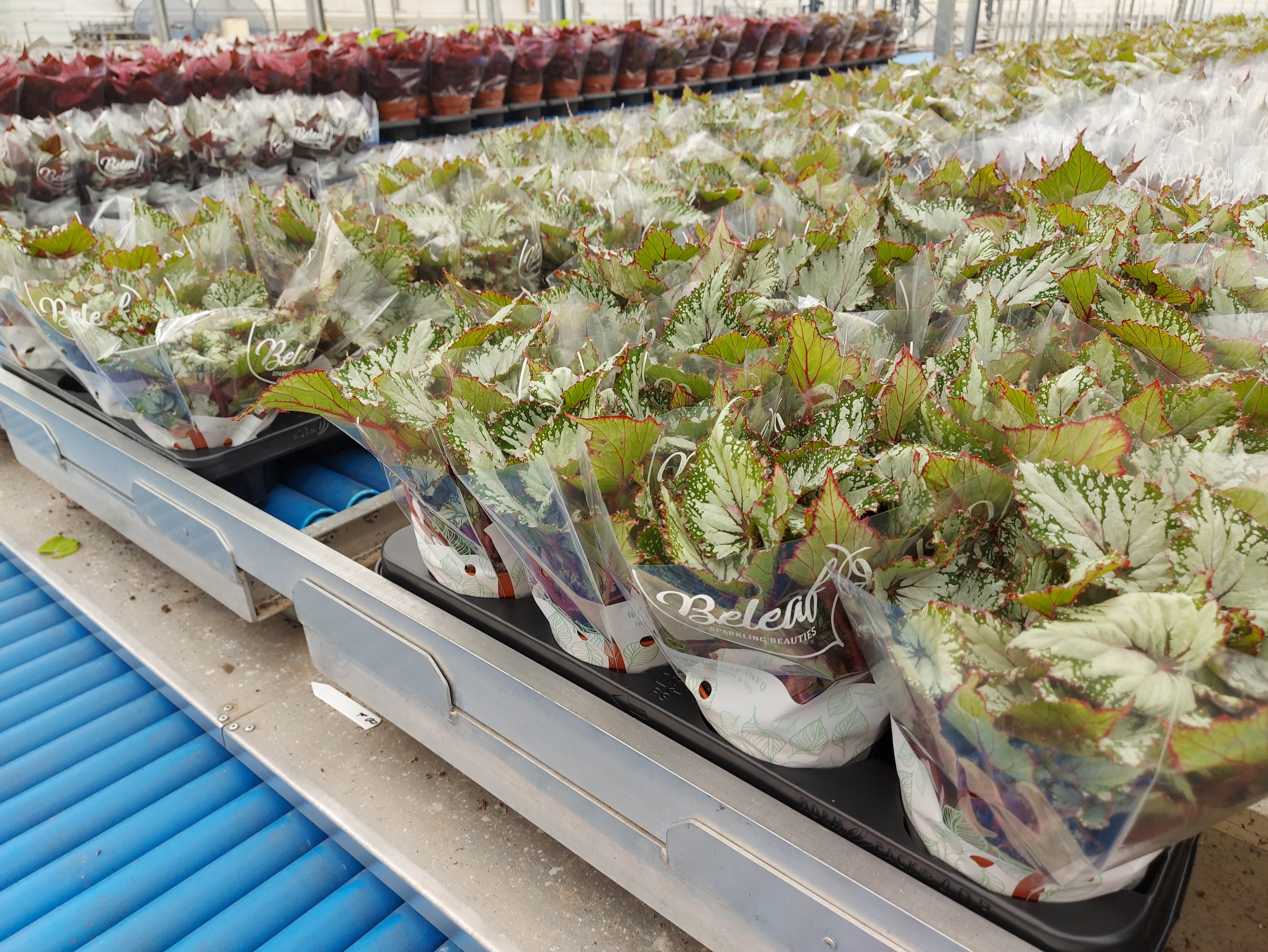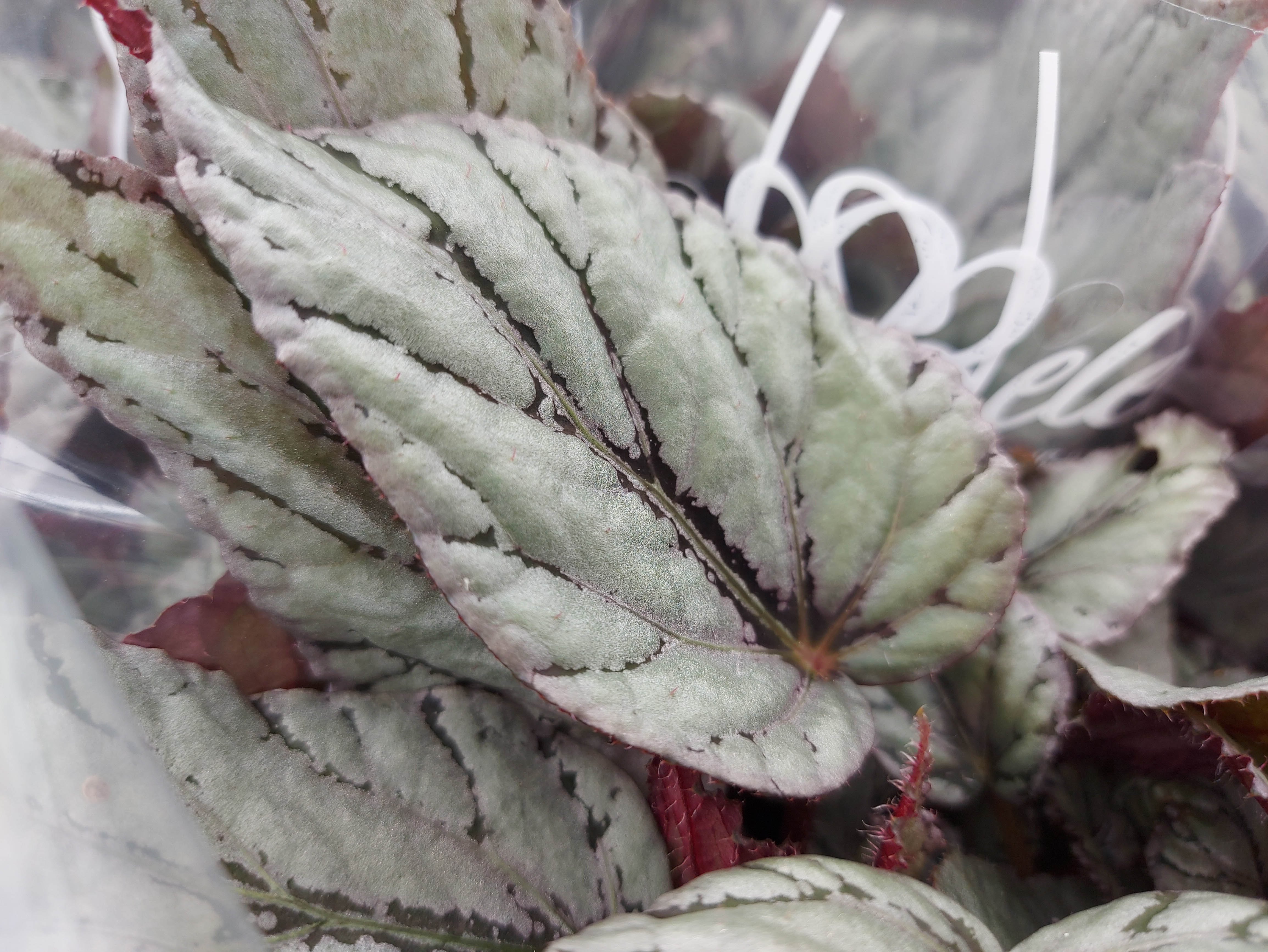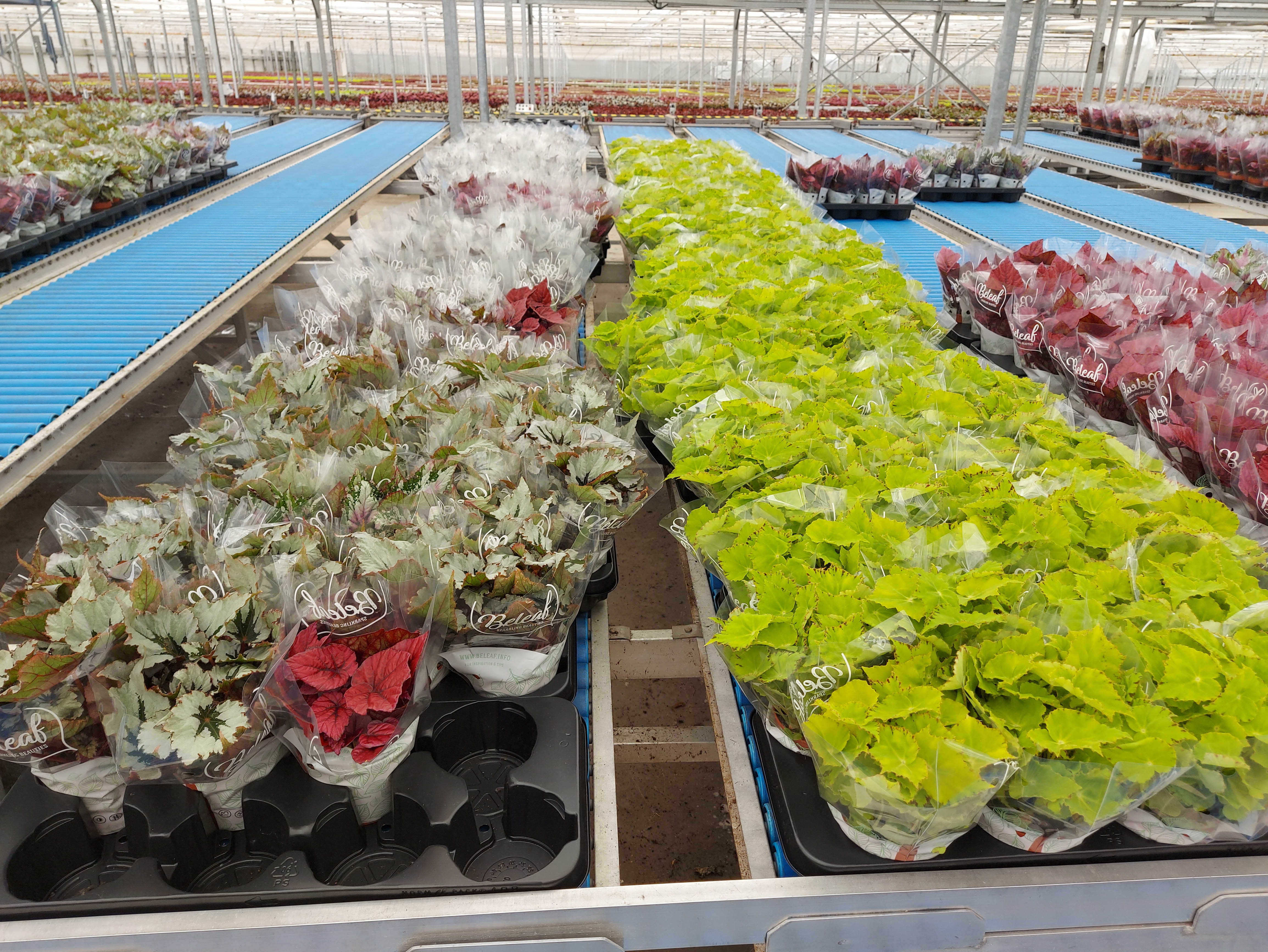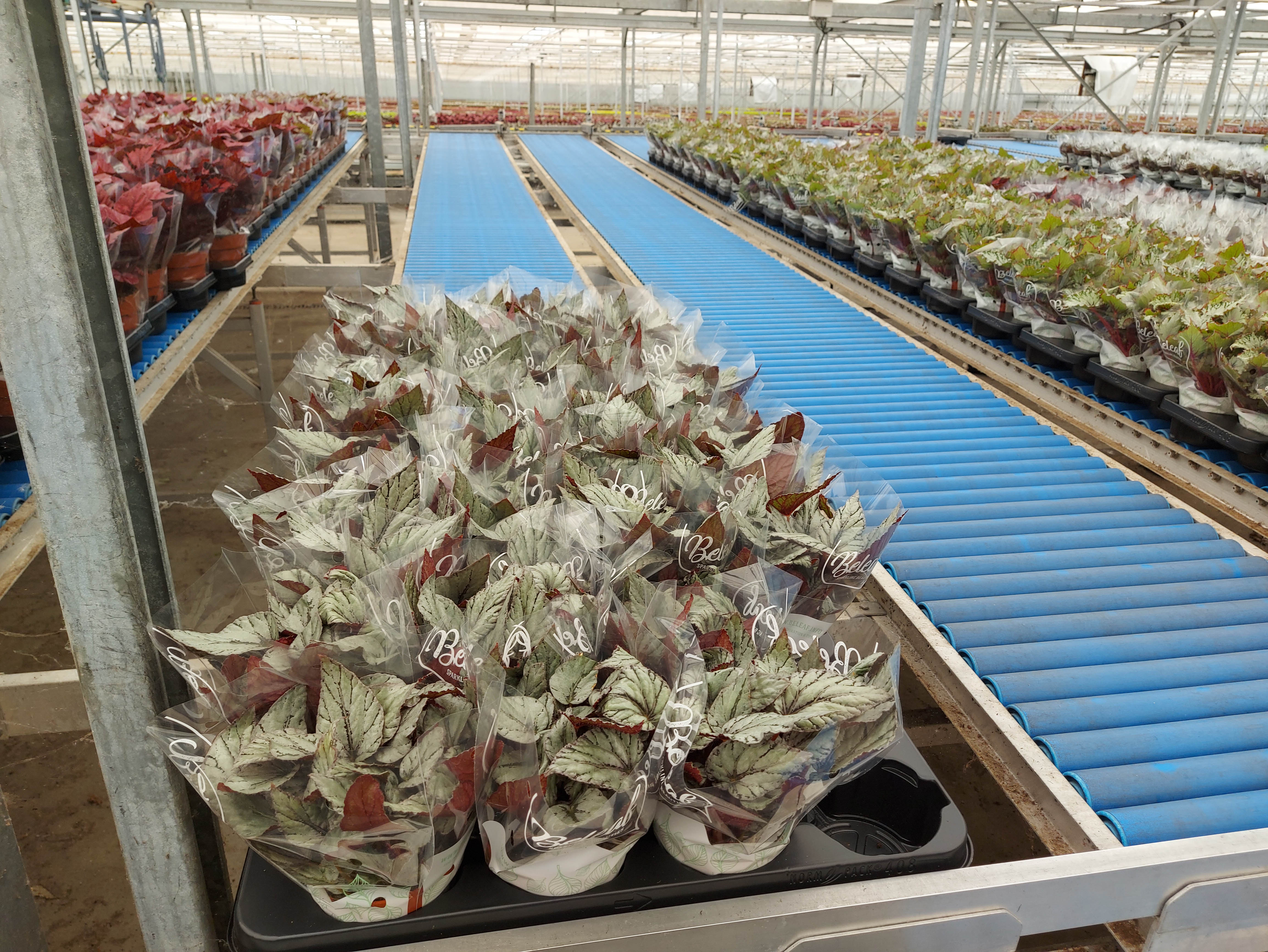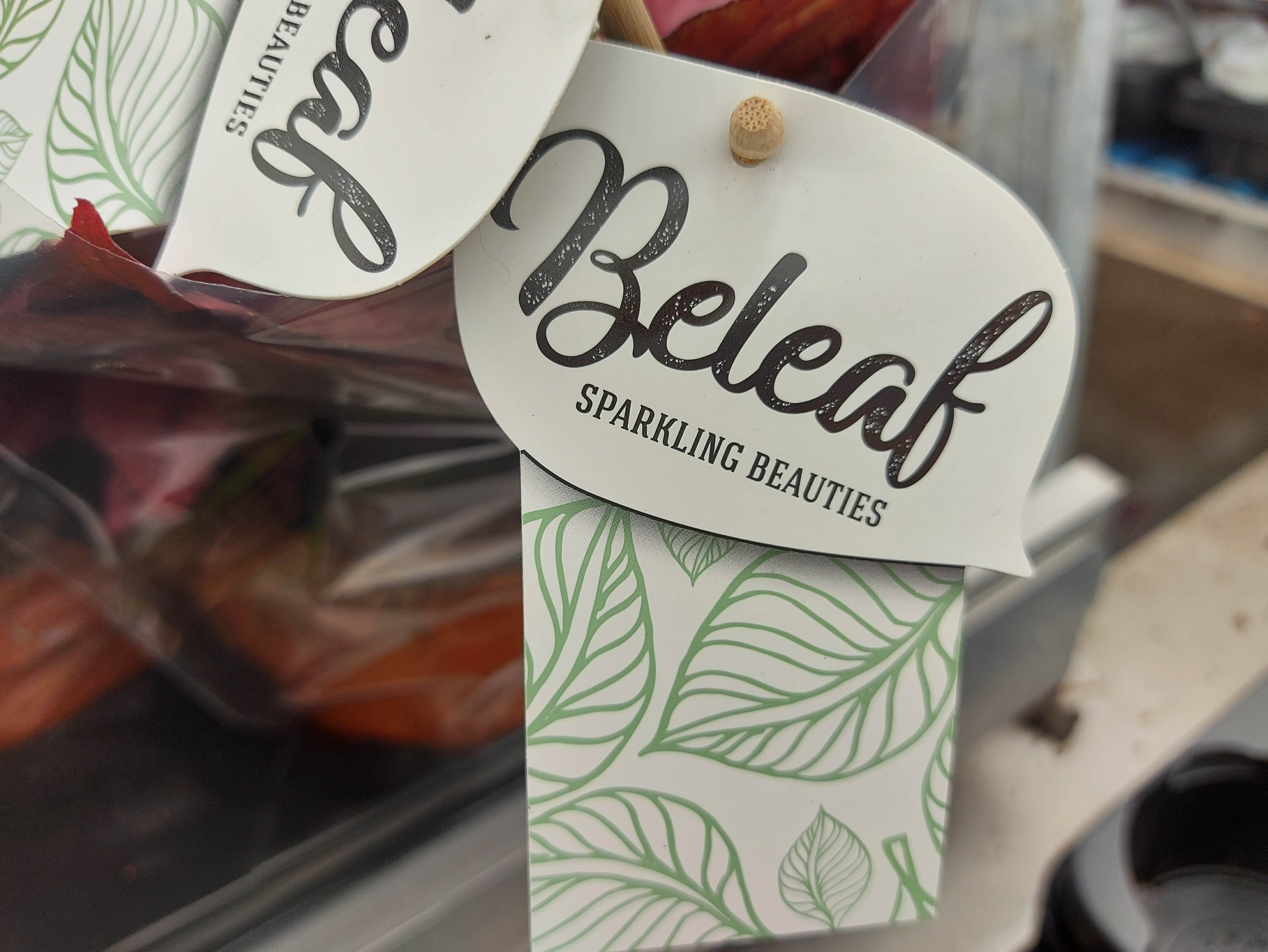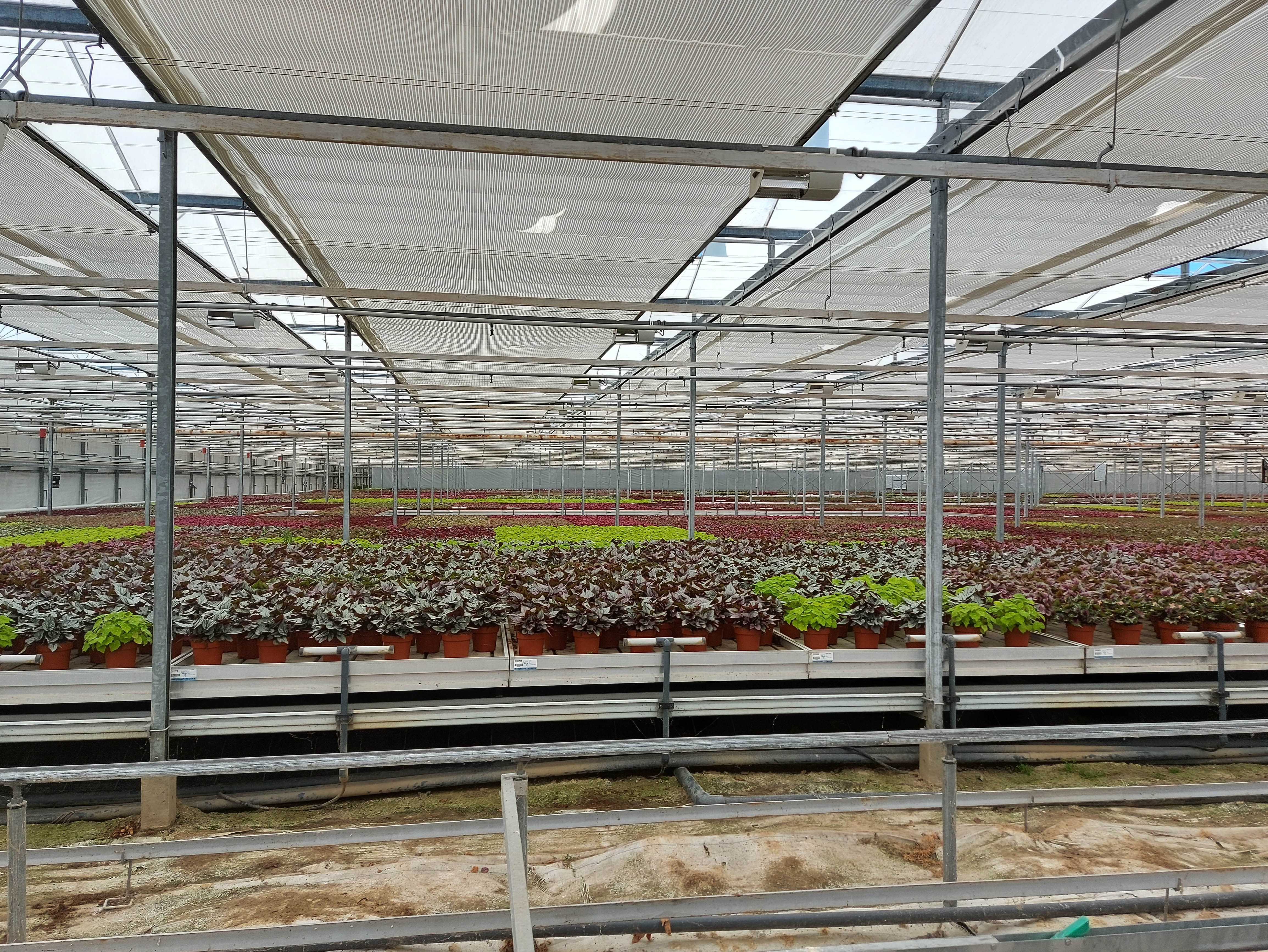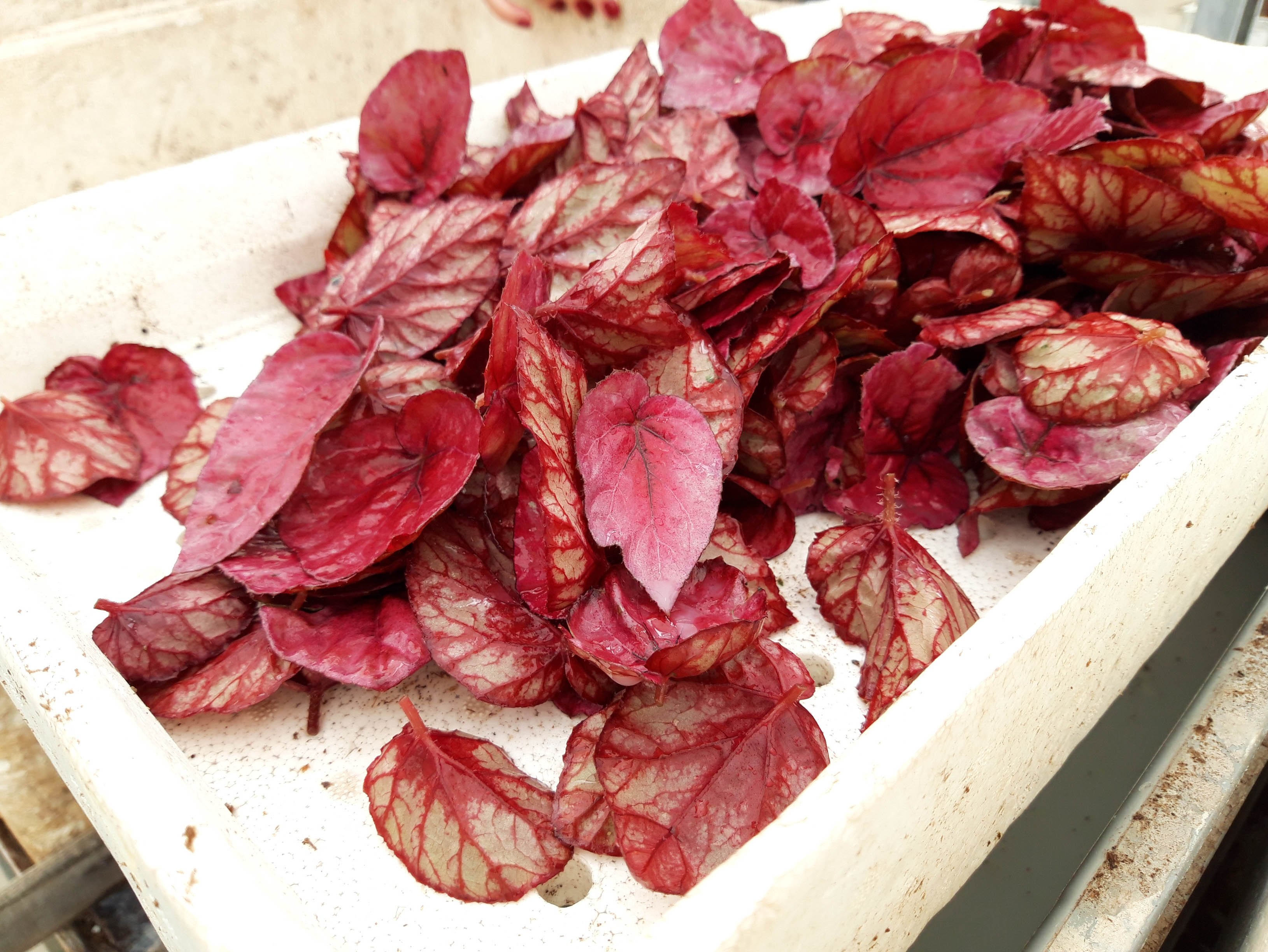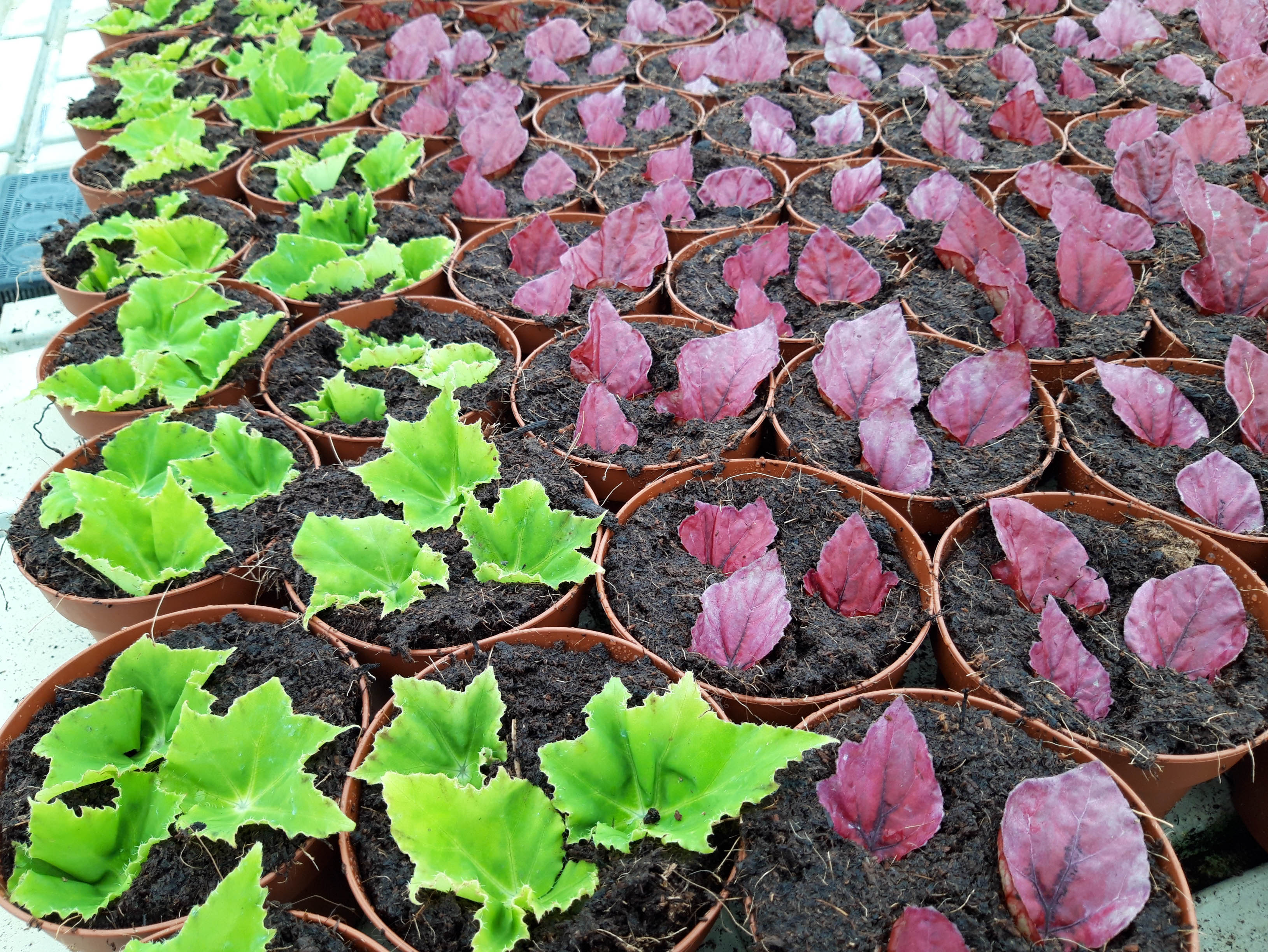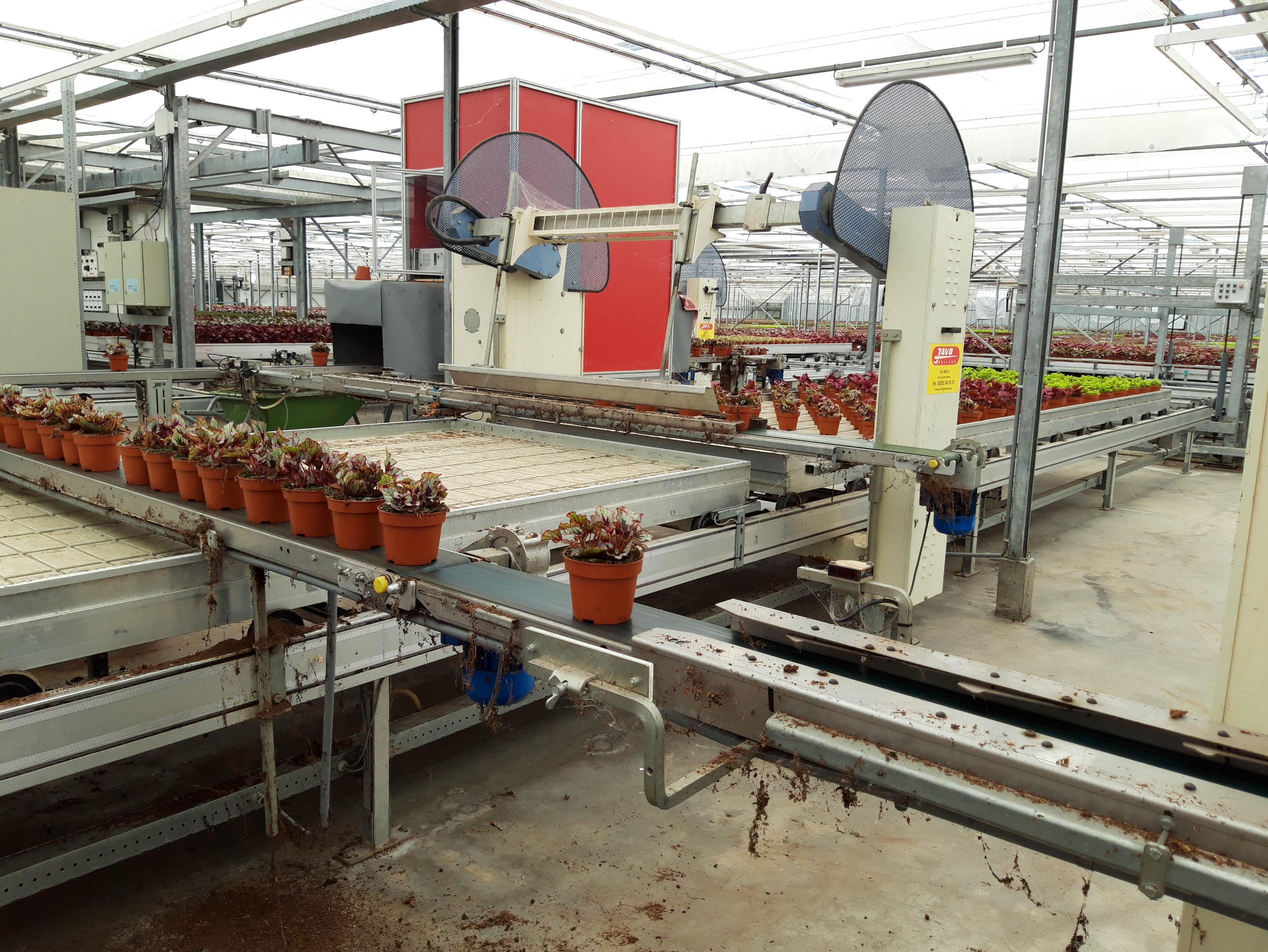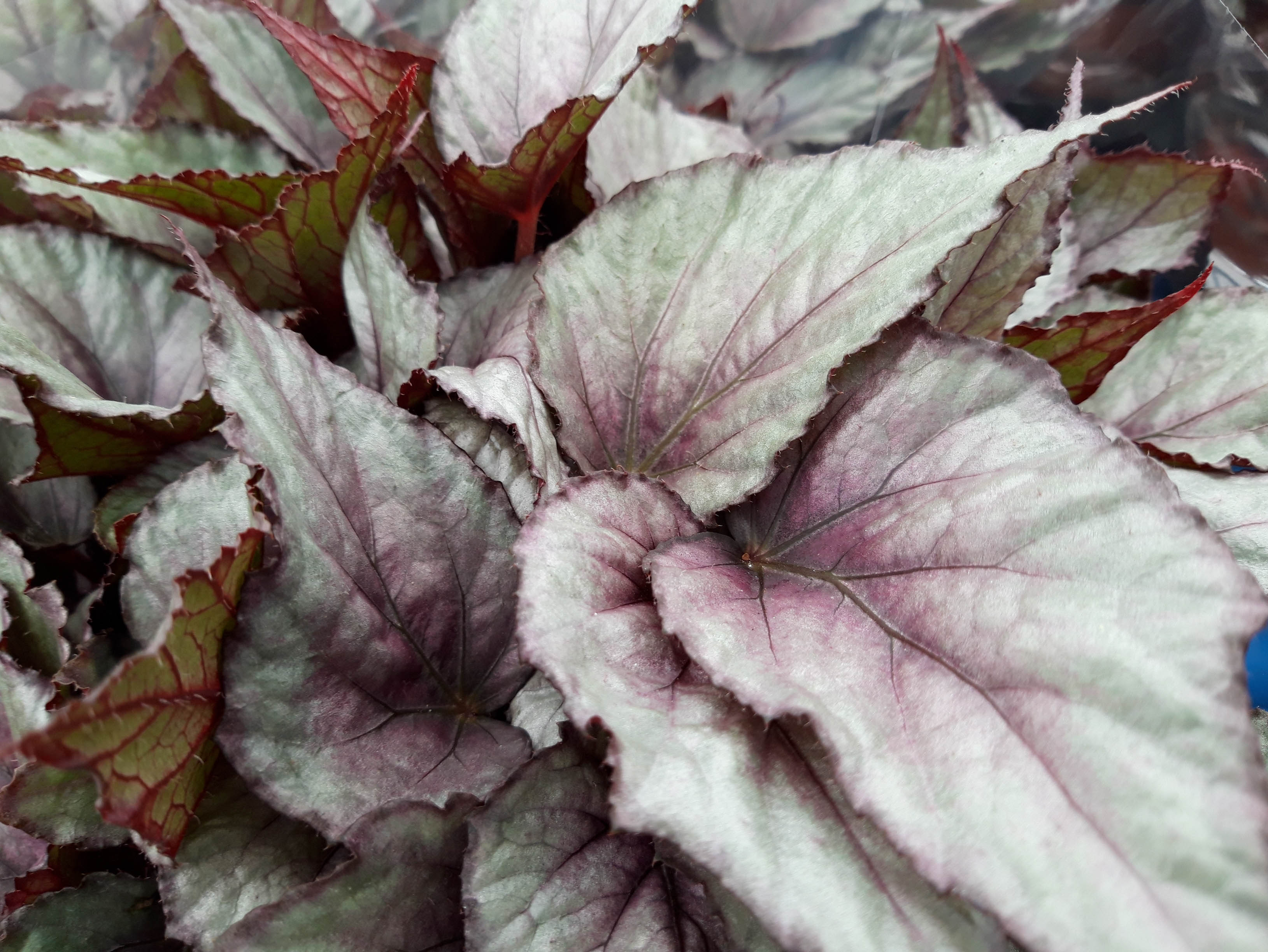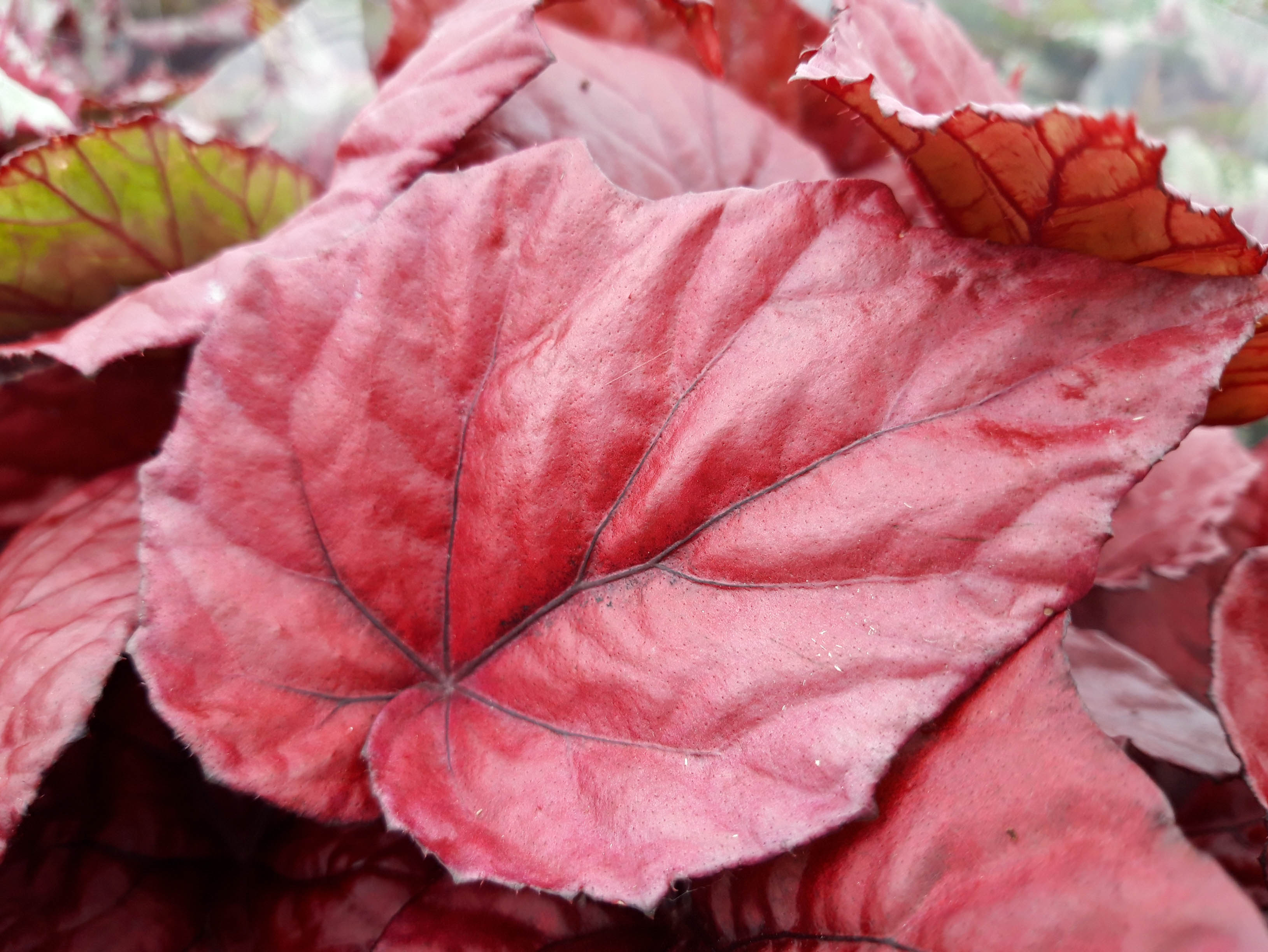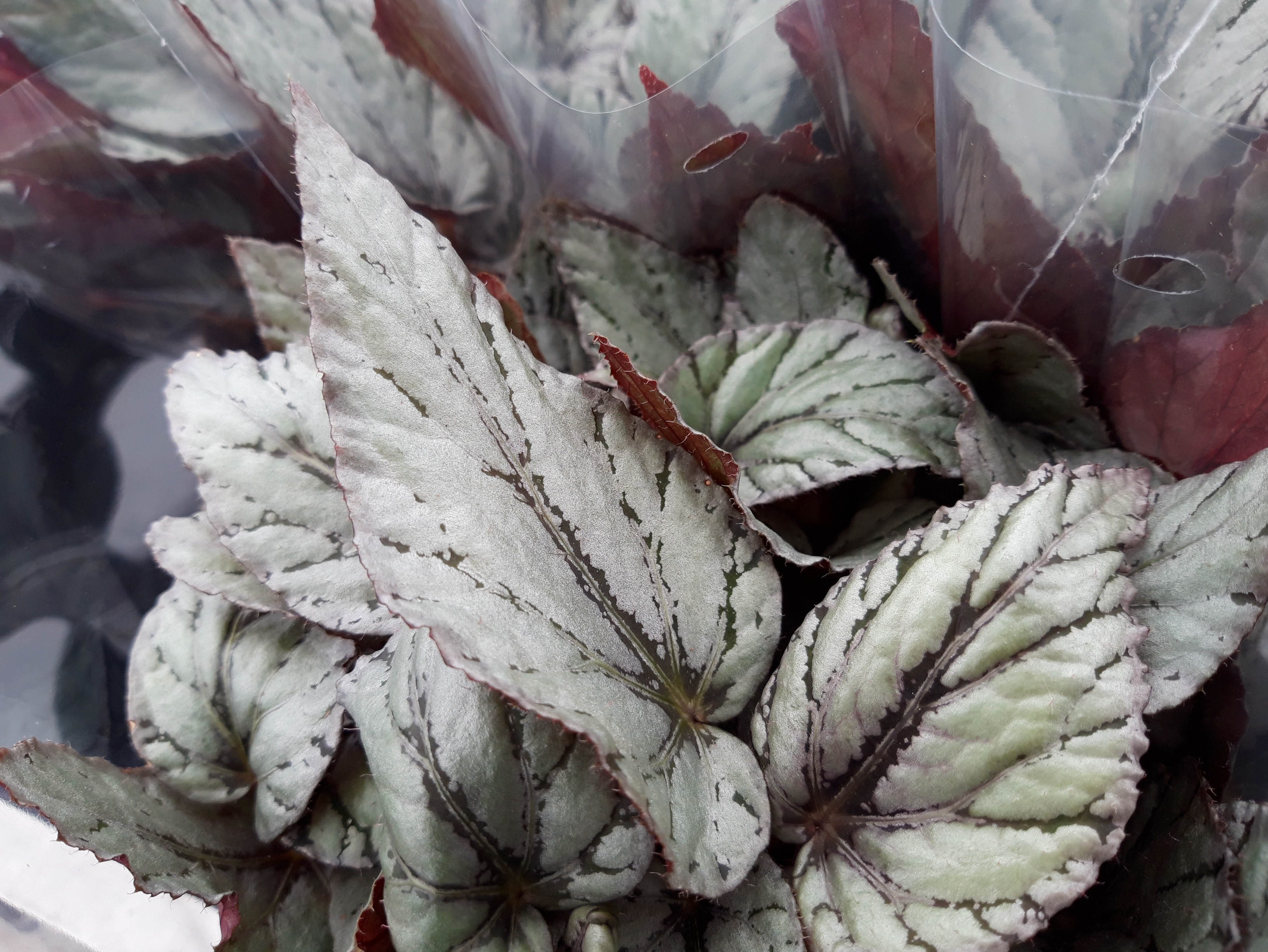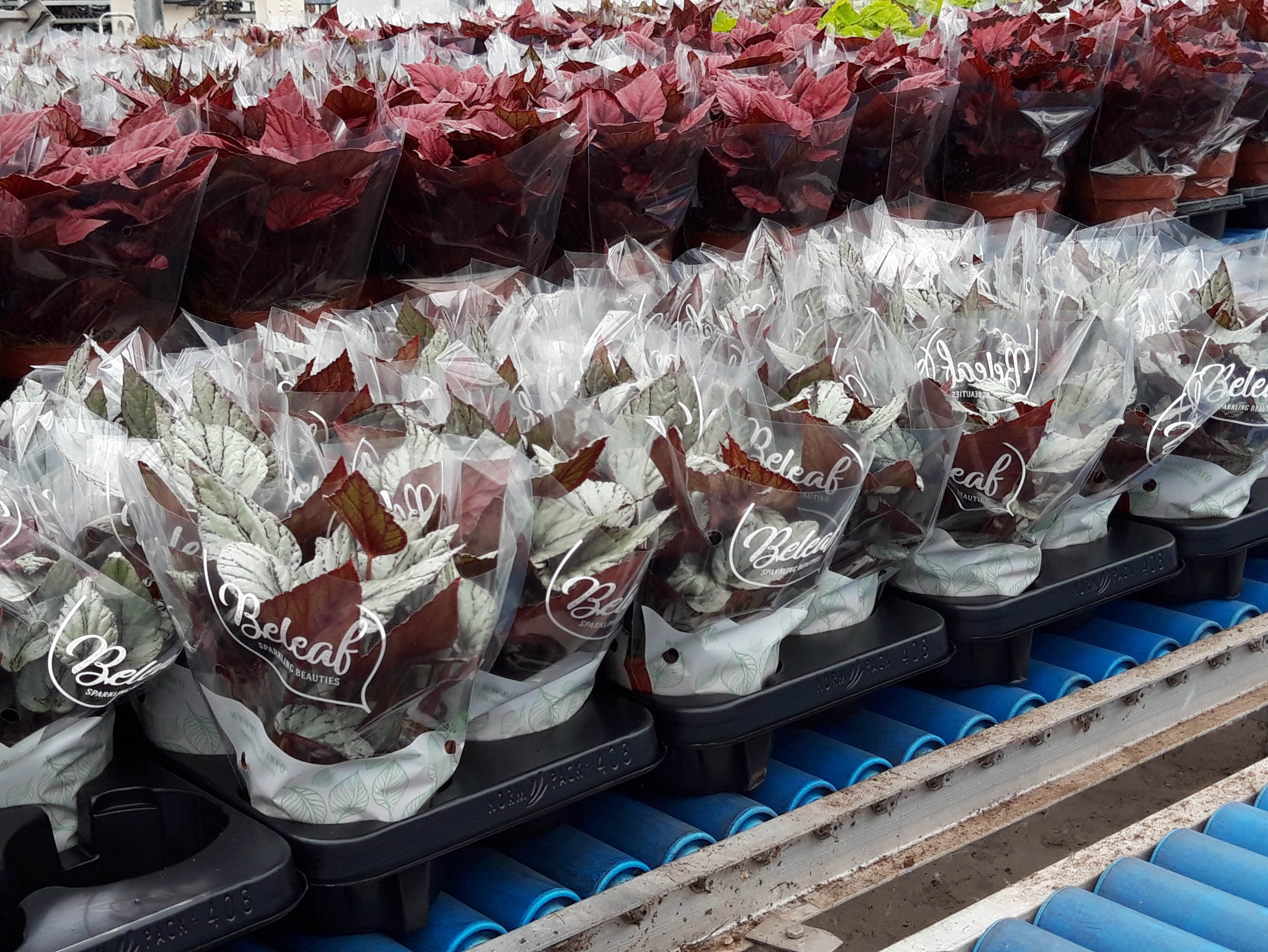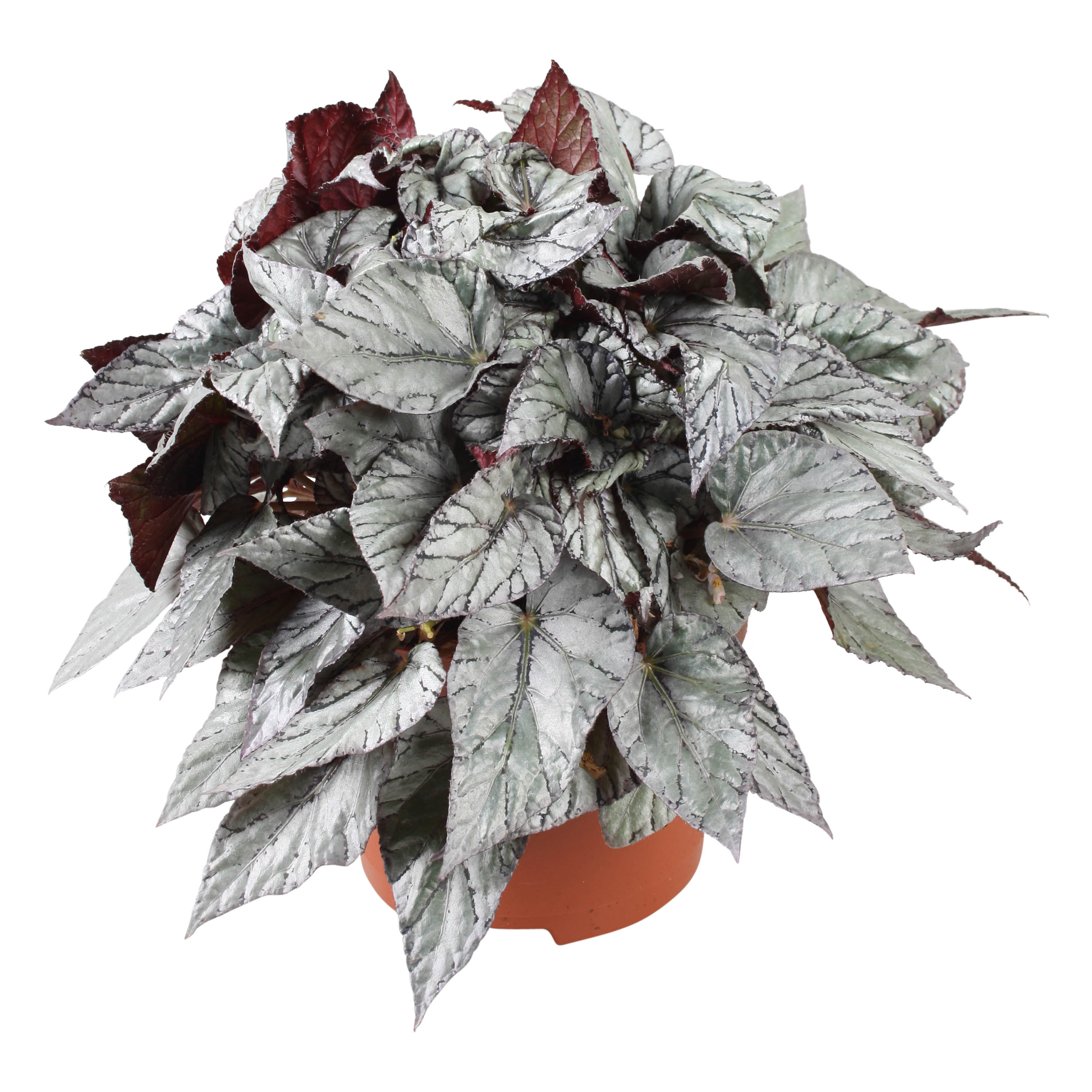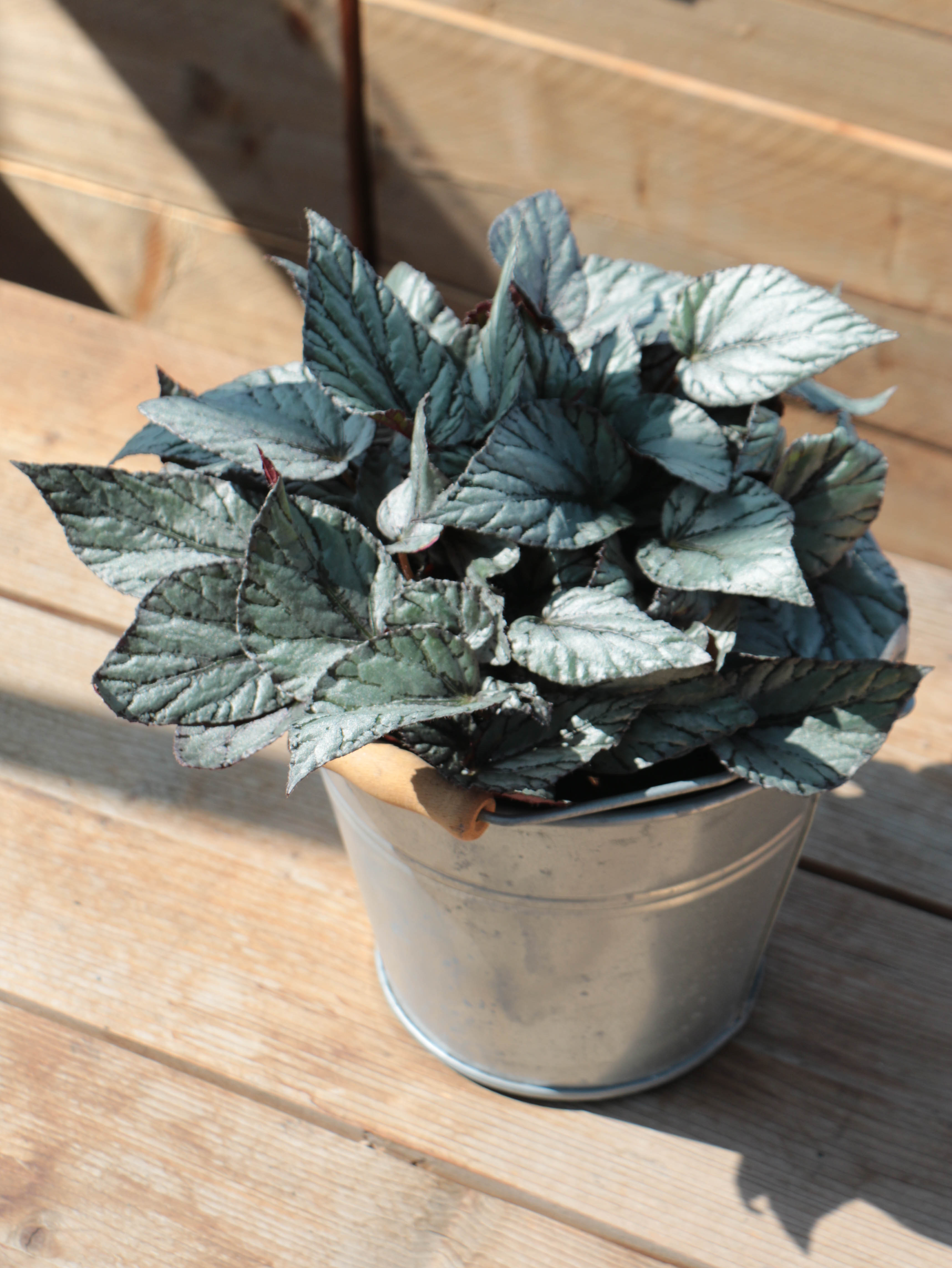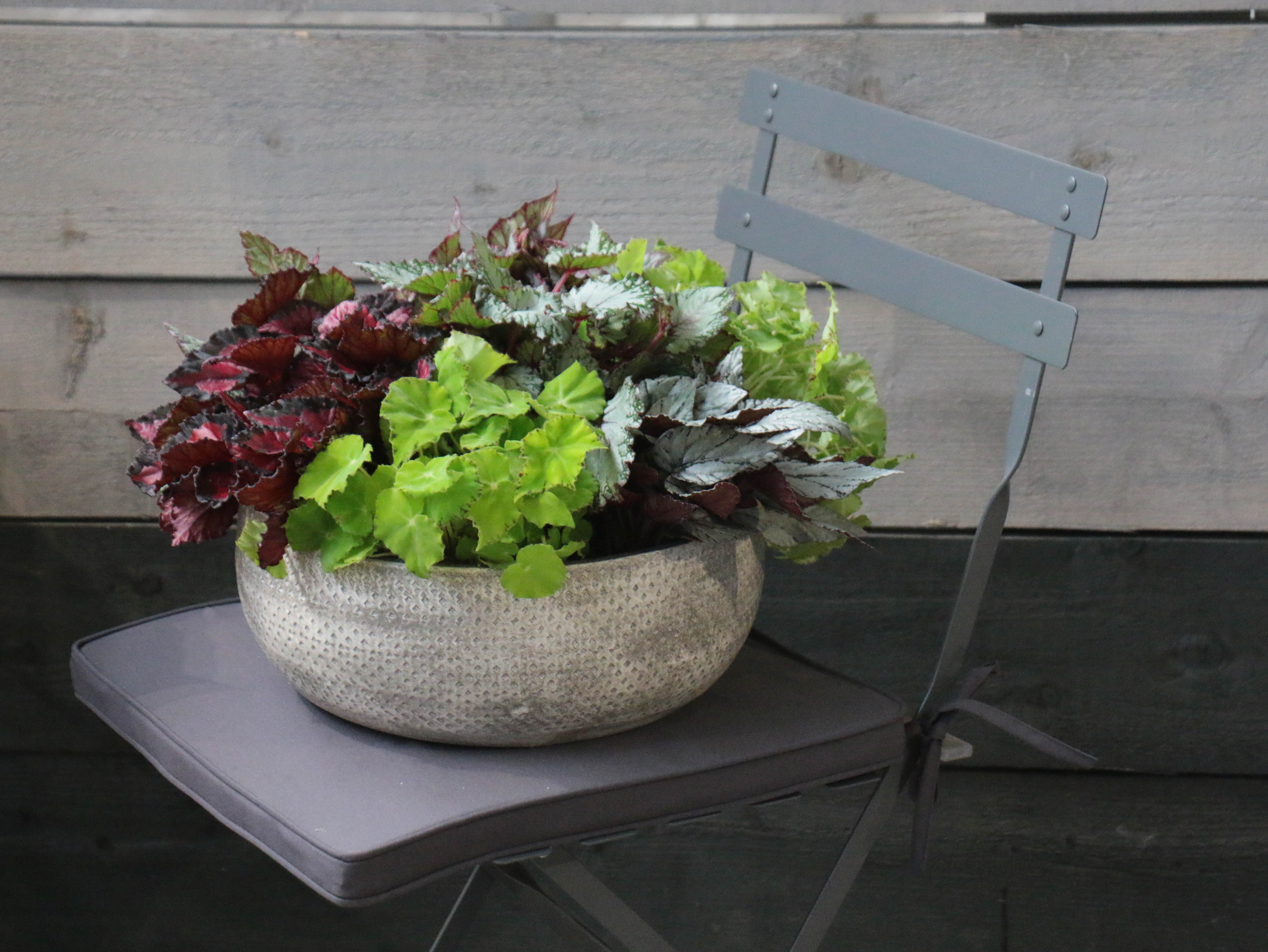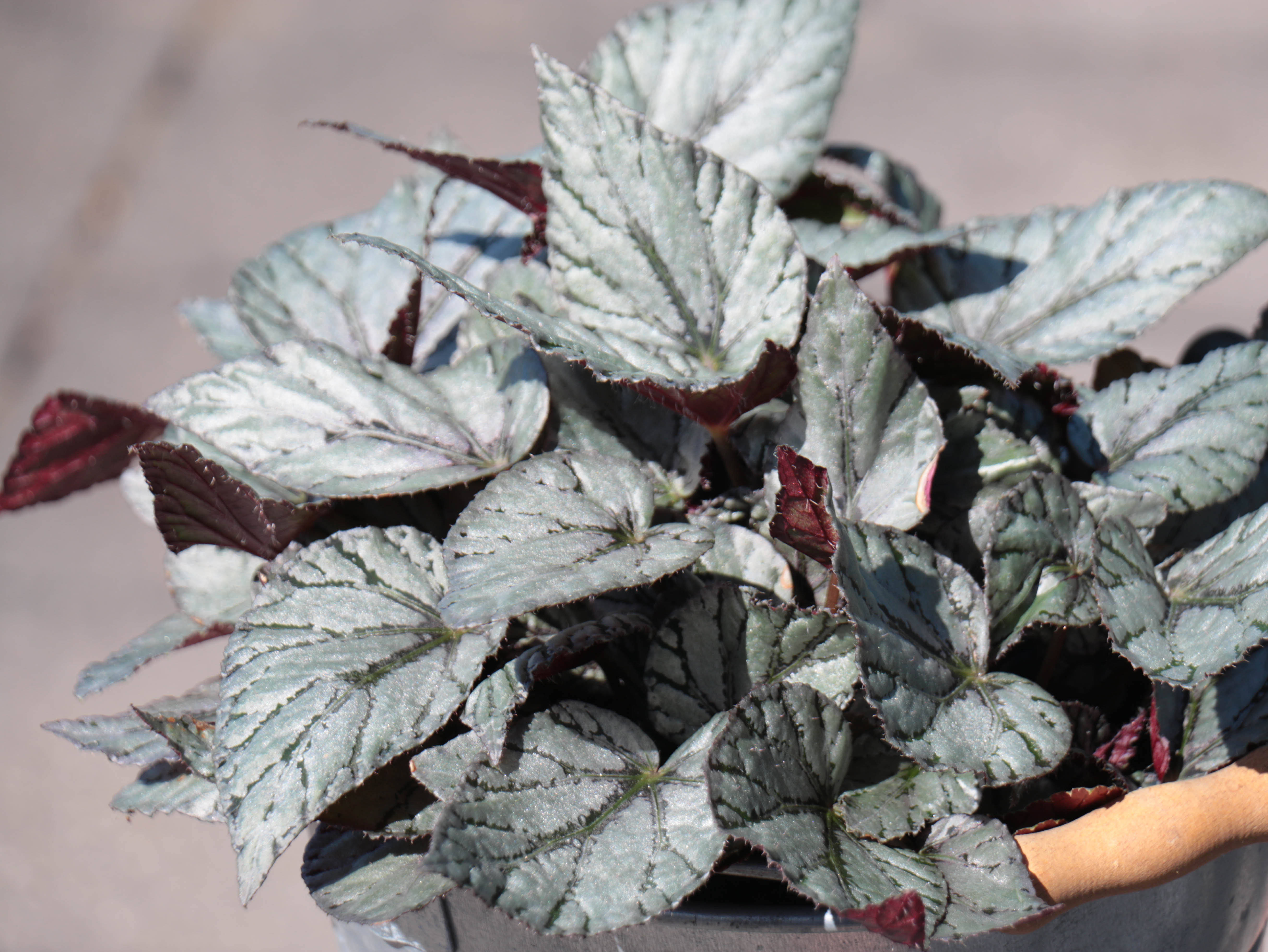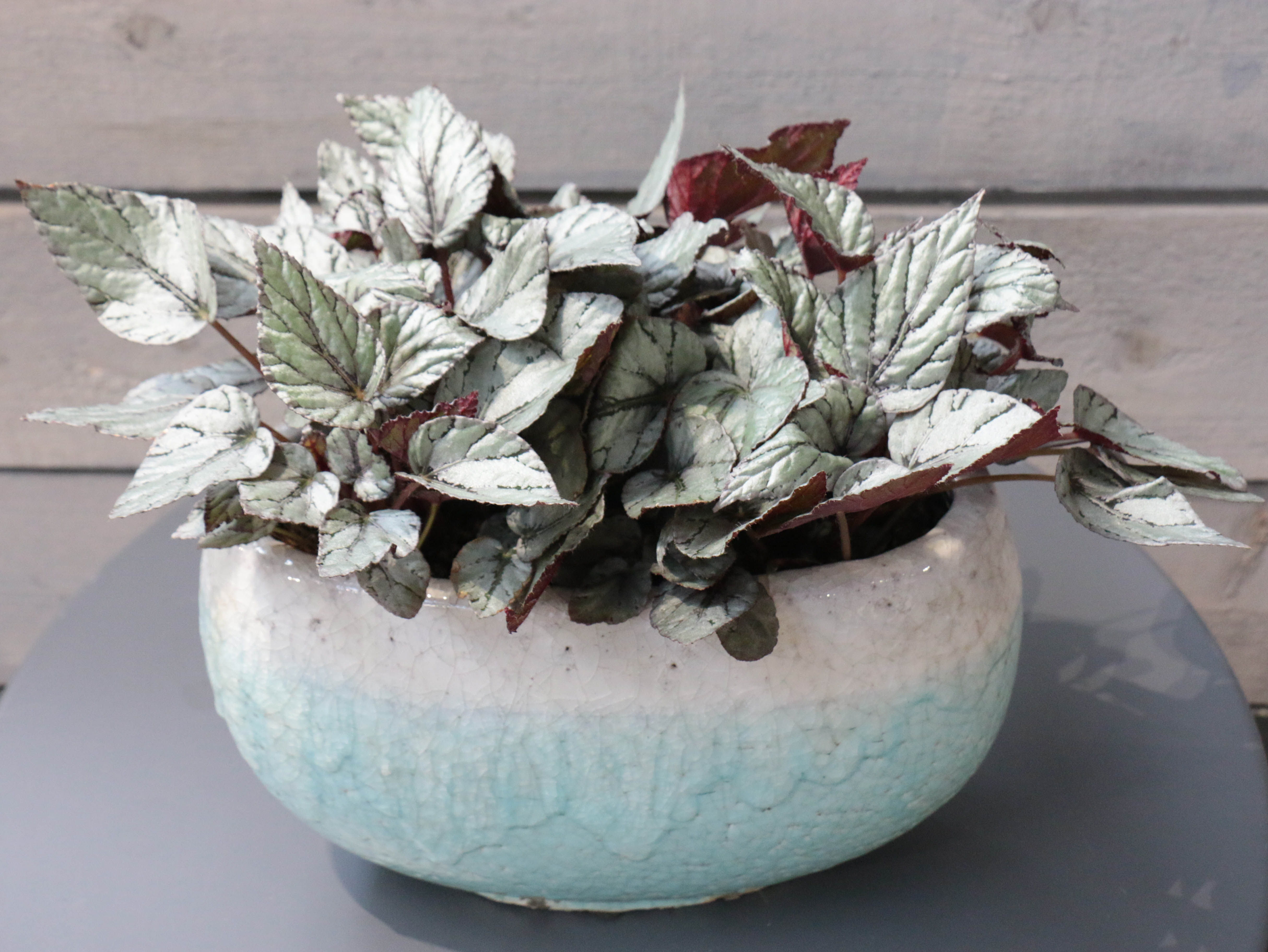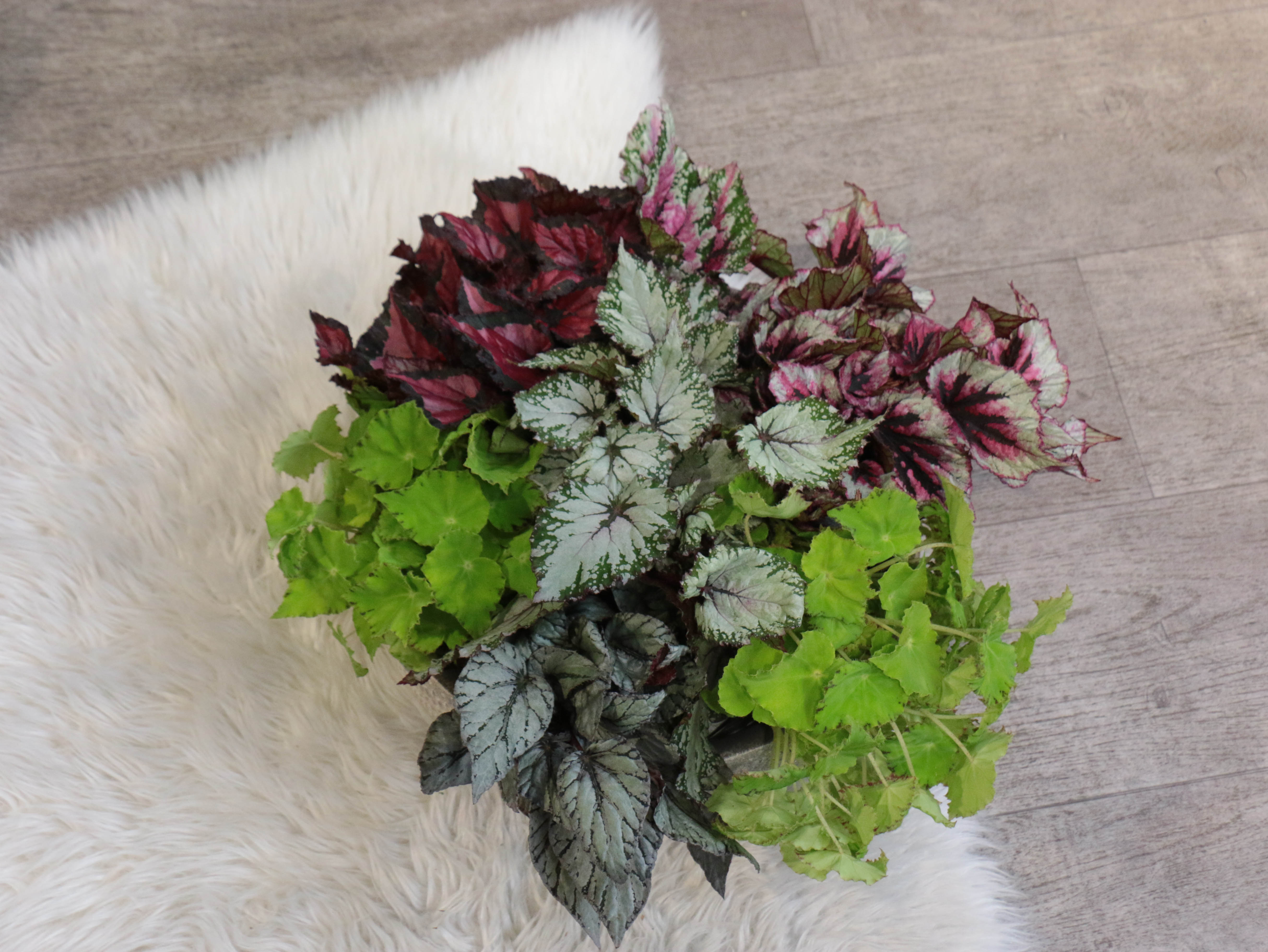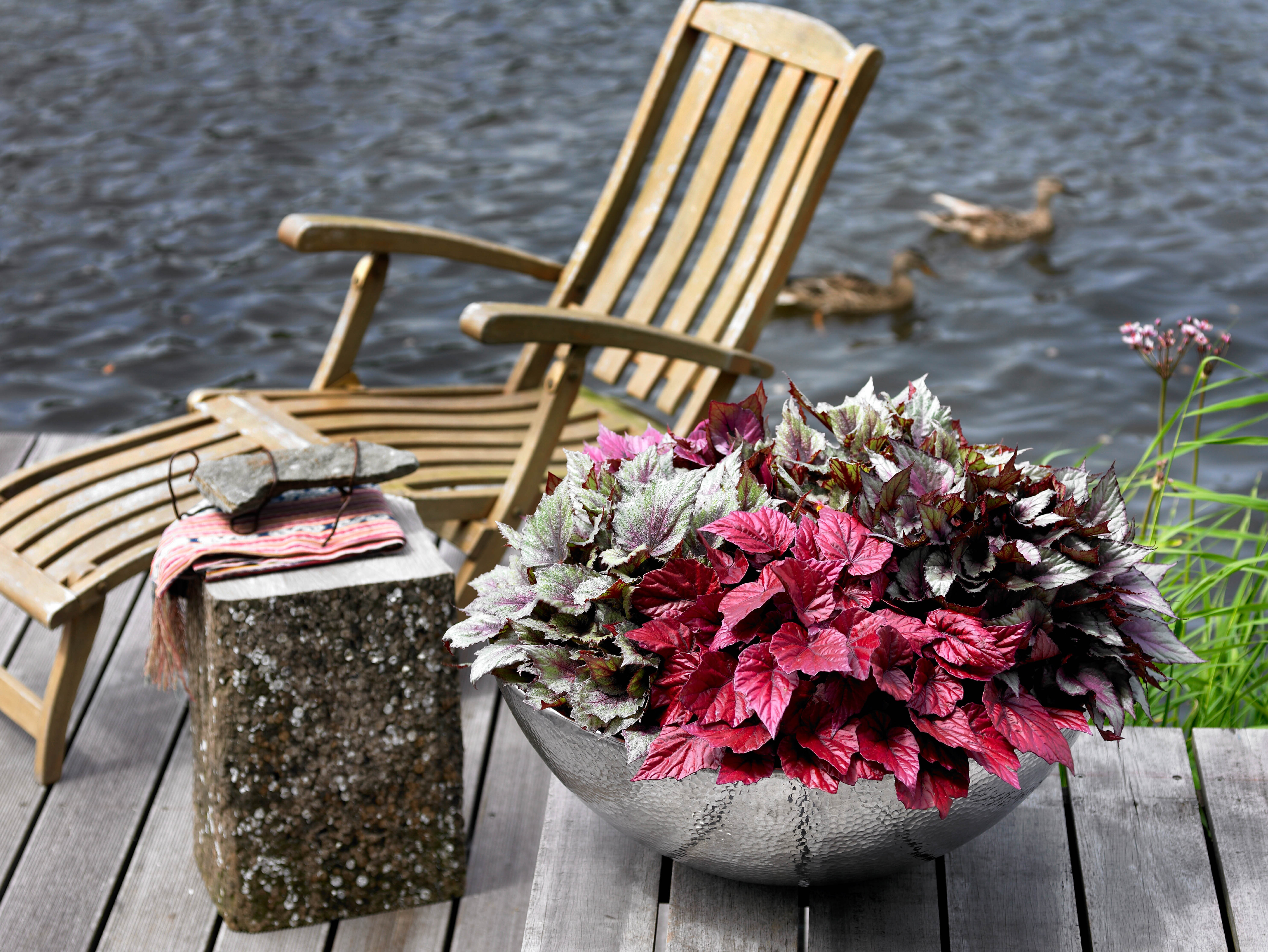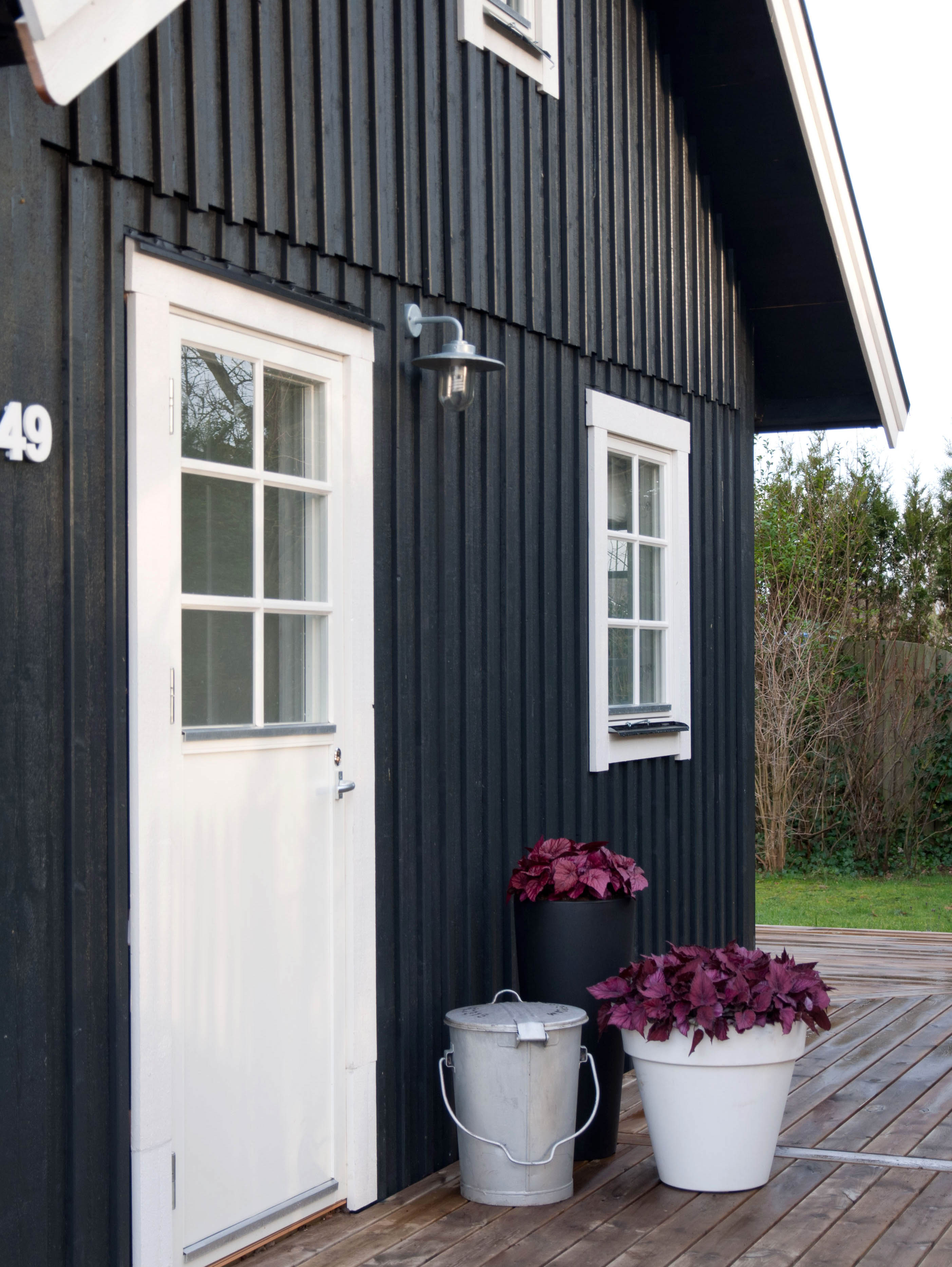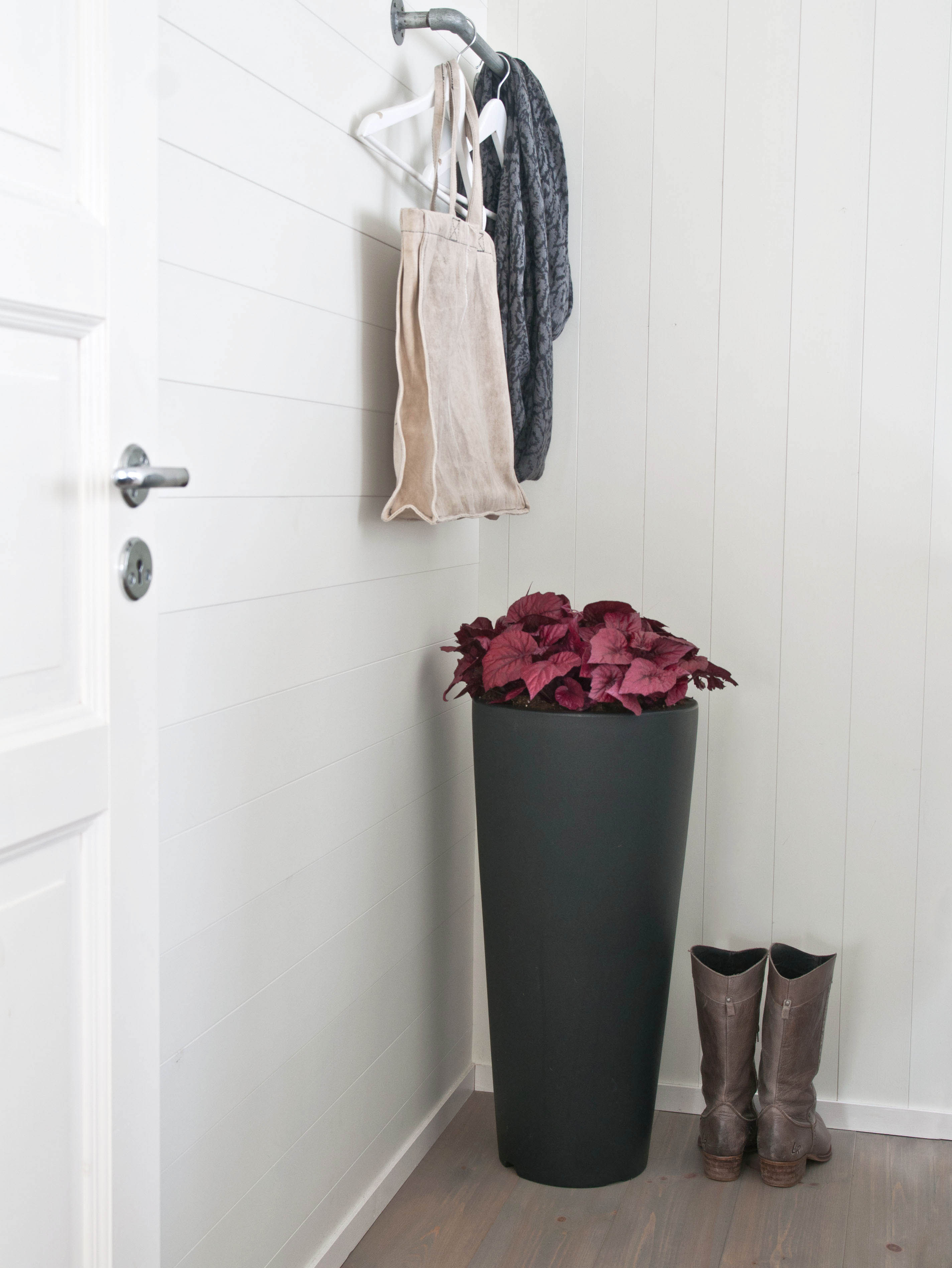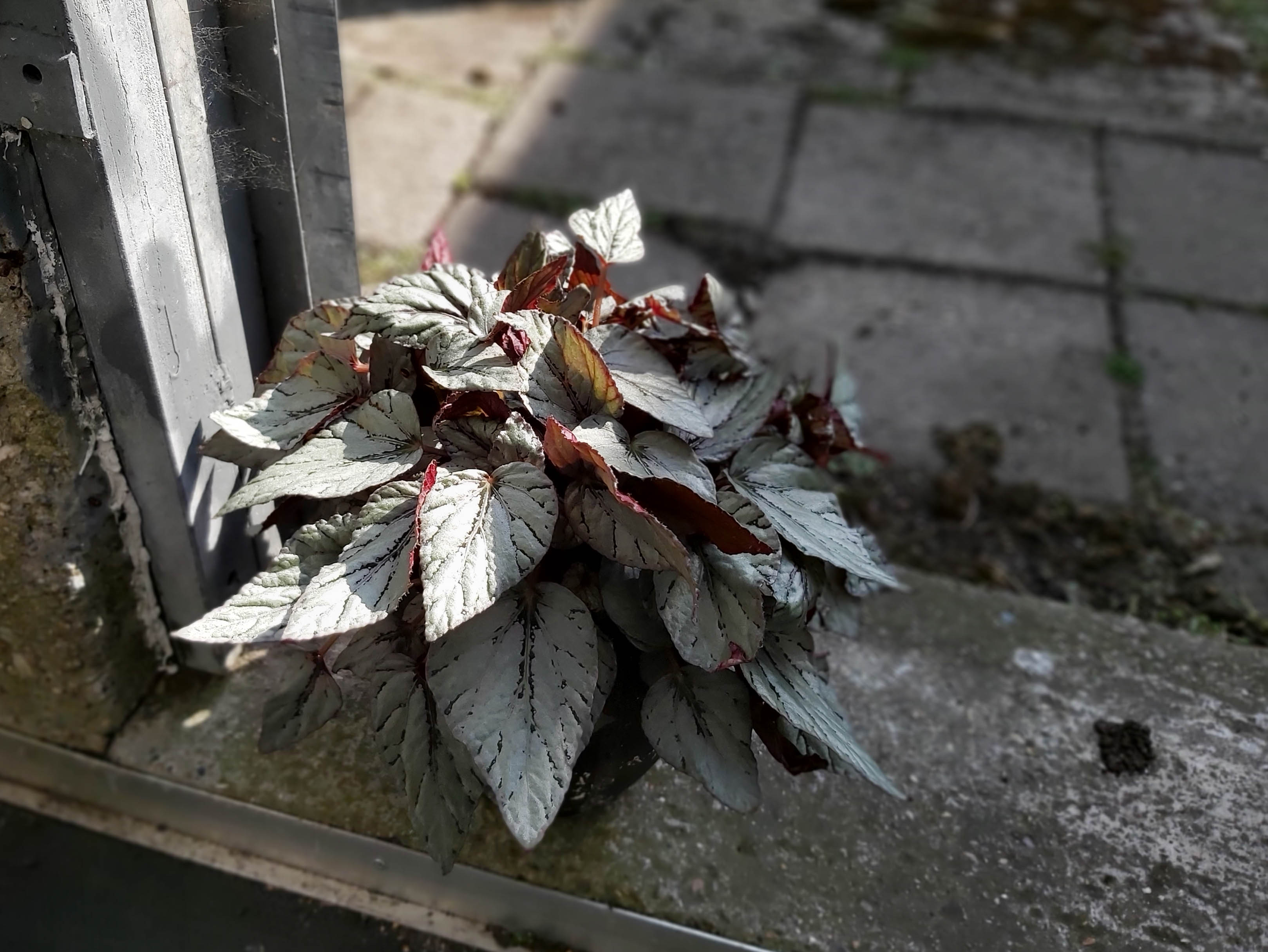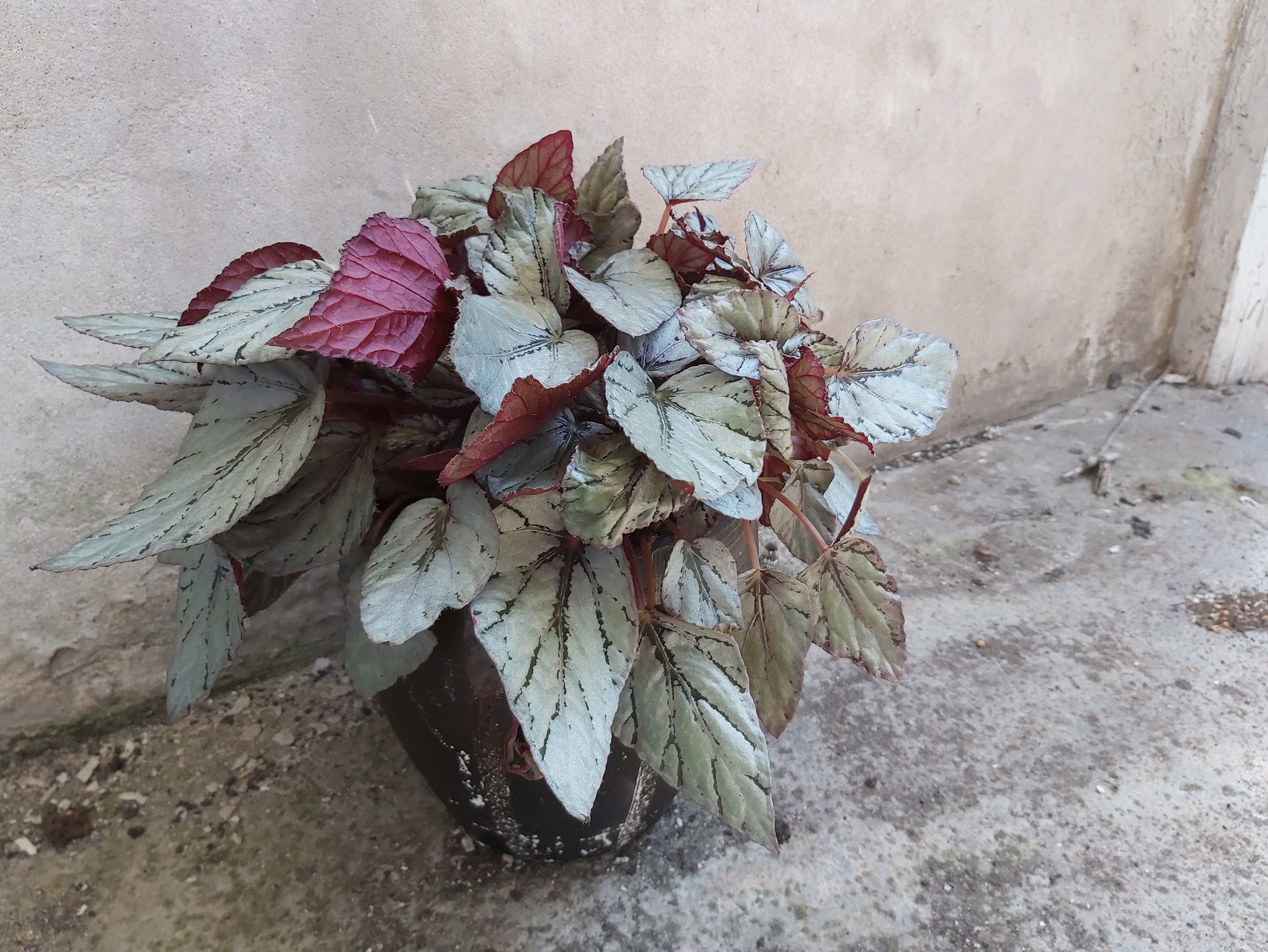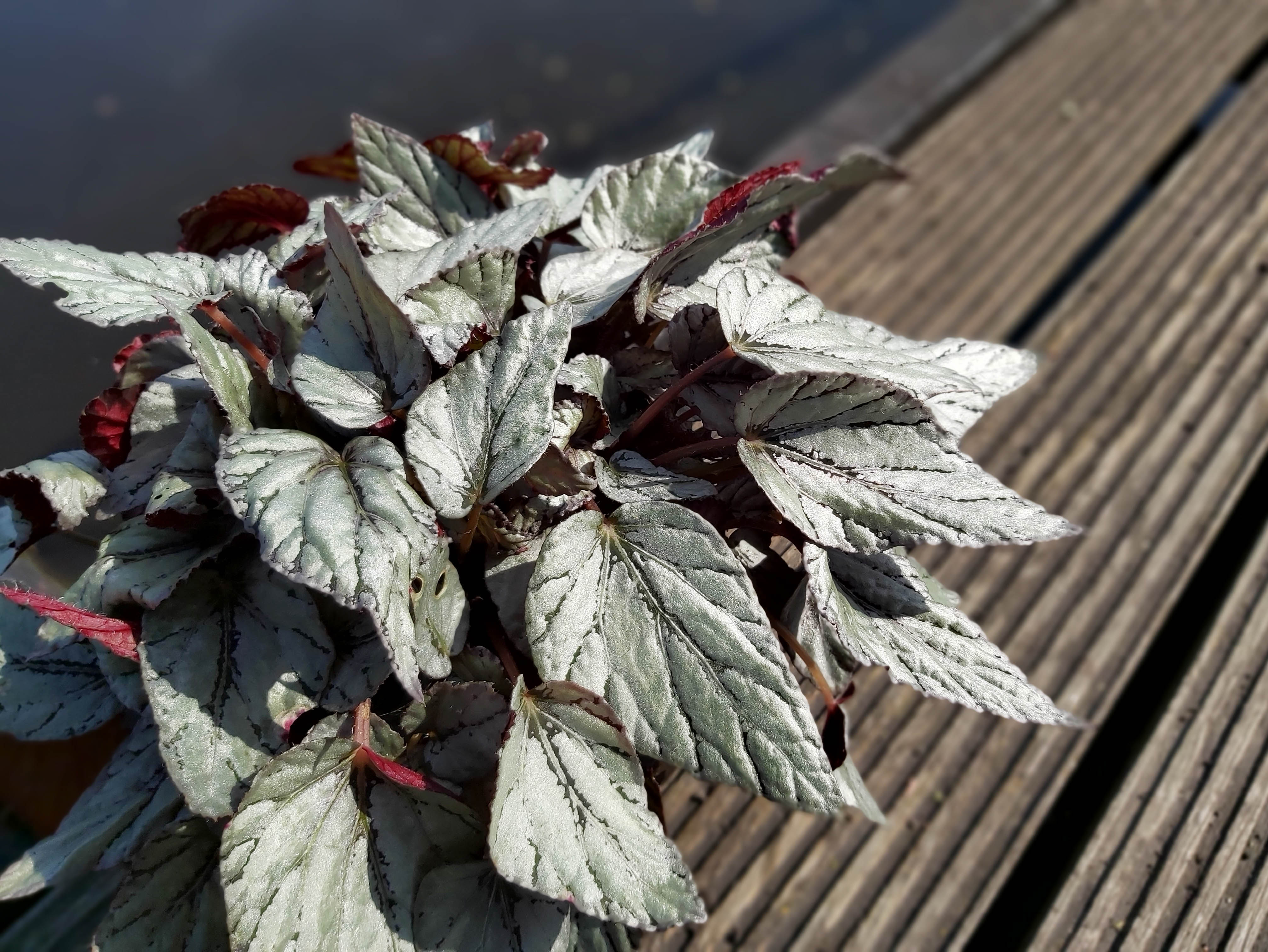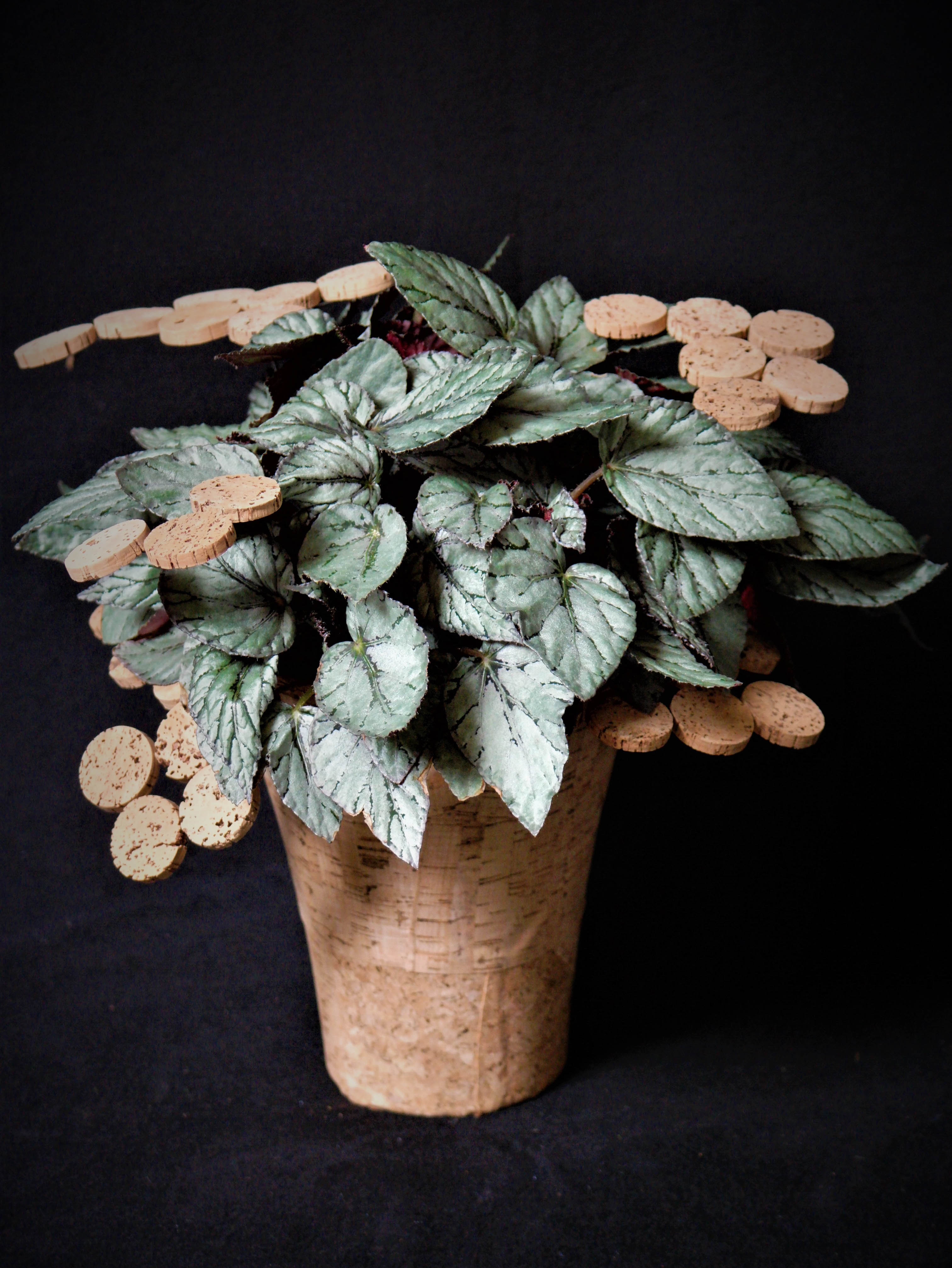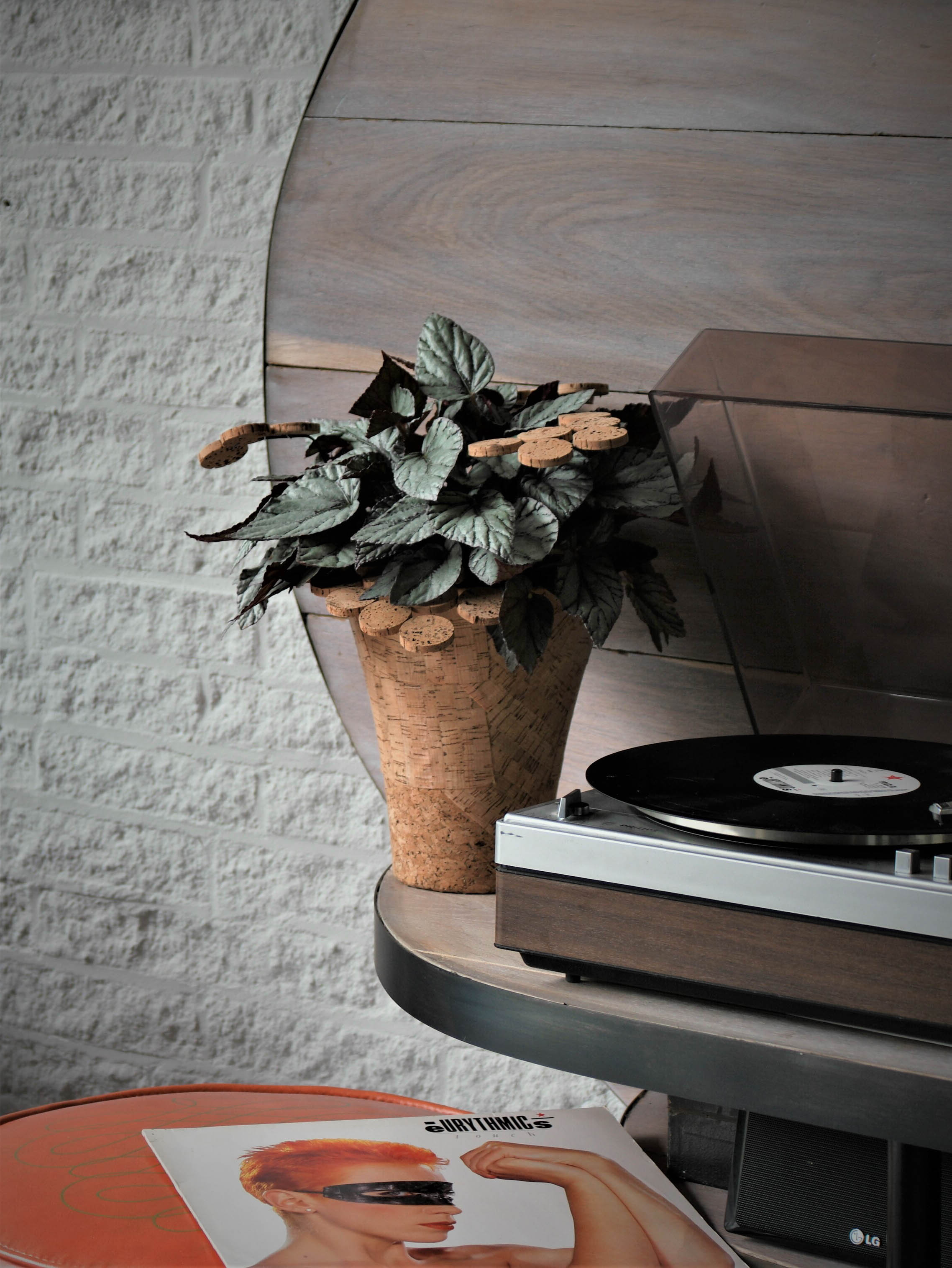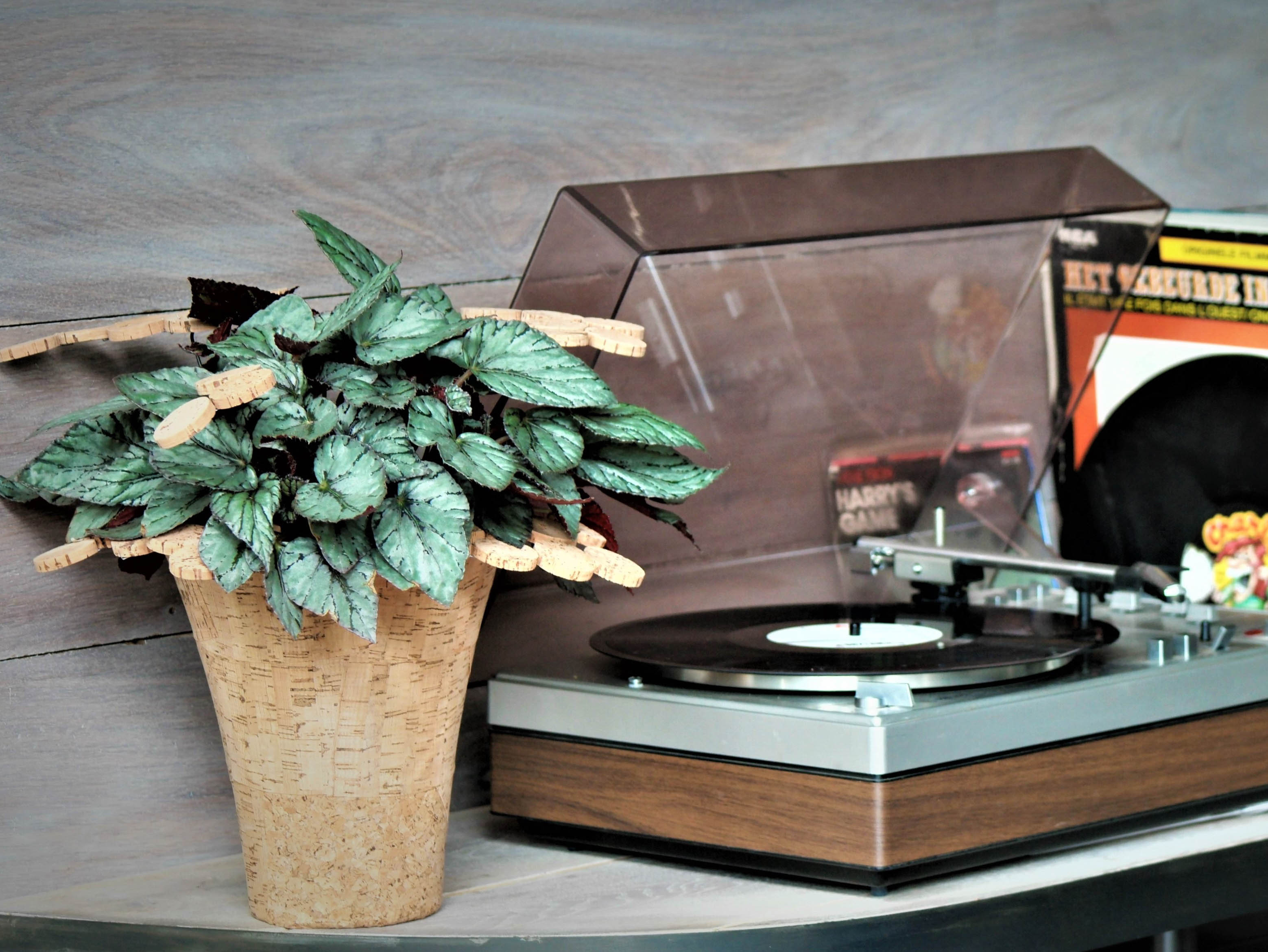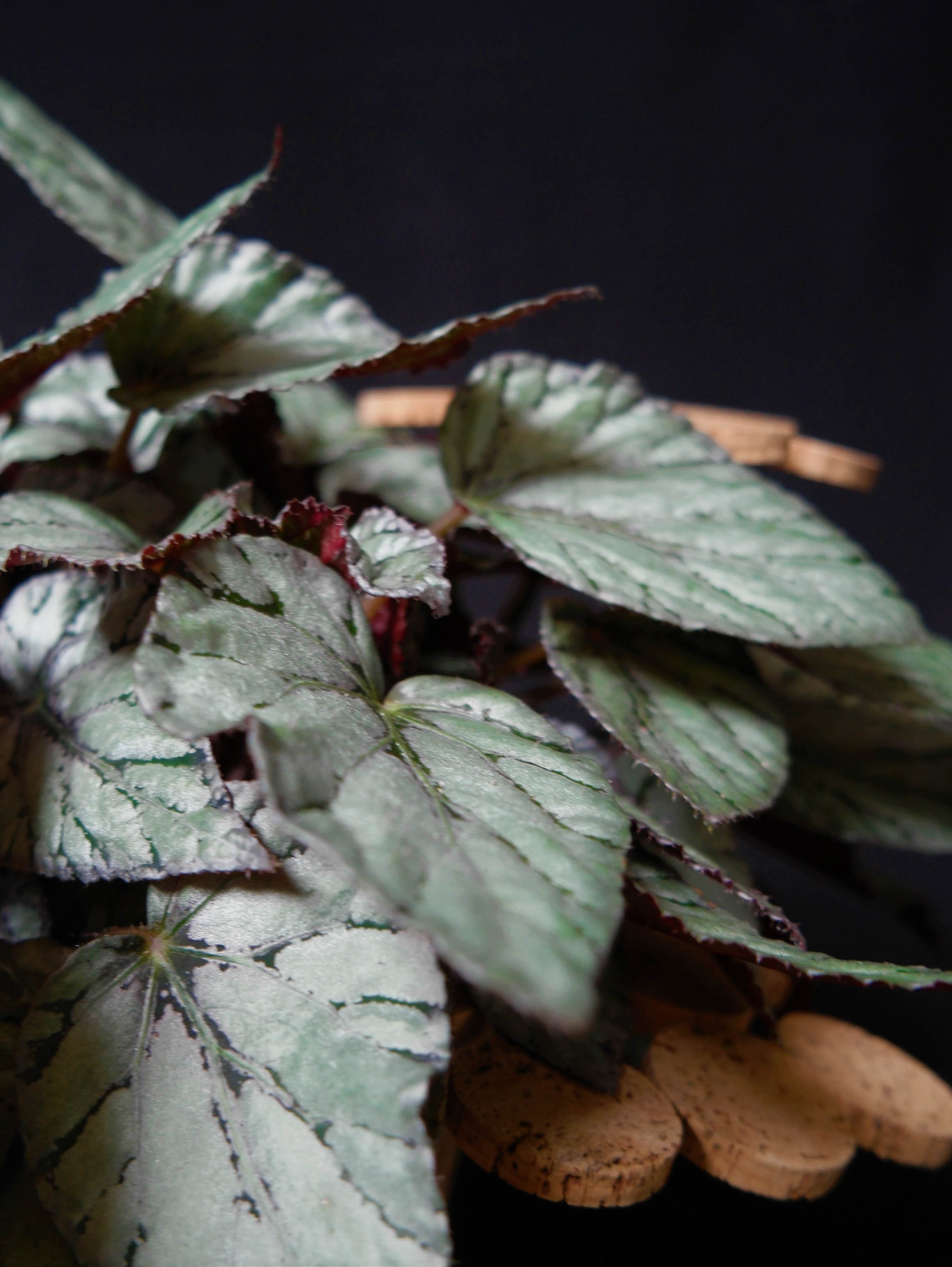This month at FloraPodium
Begonia rex 'Arctic Breeze'
Calendar
De Begonia rex 'Arctic Breeze' is available all year.
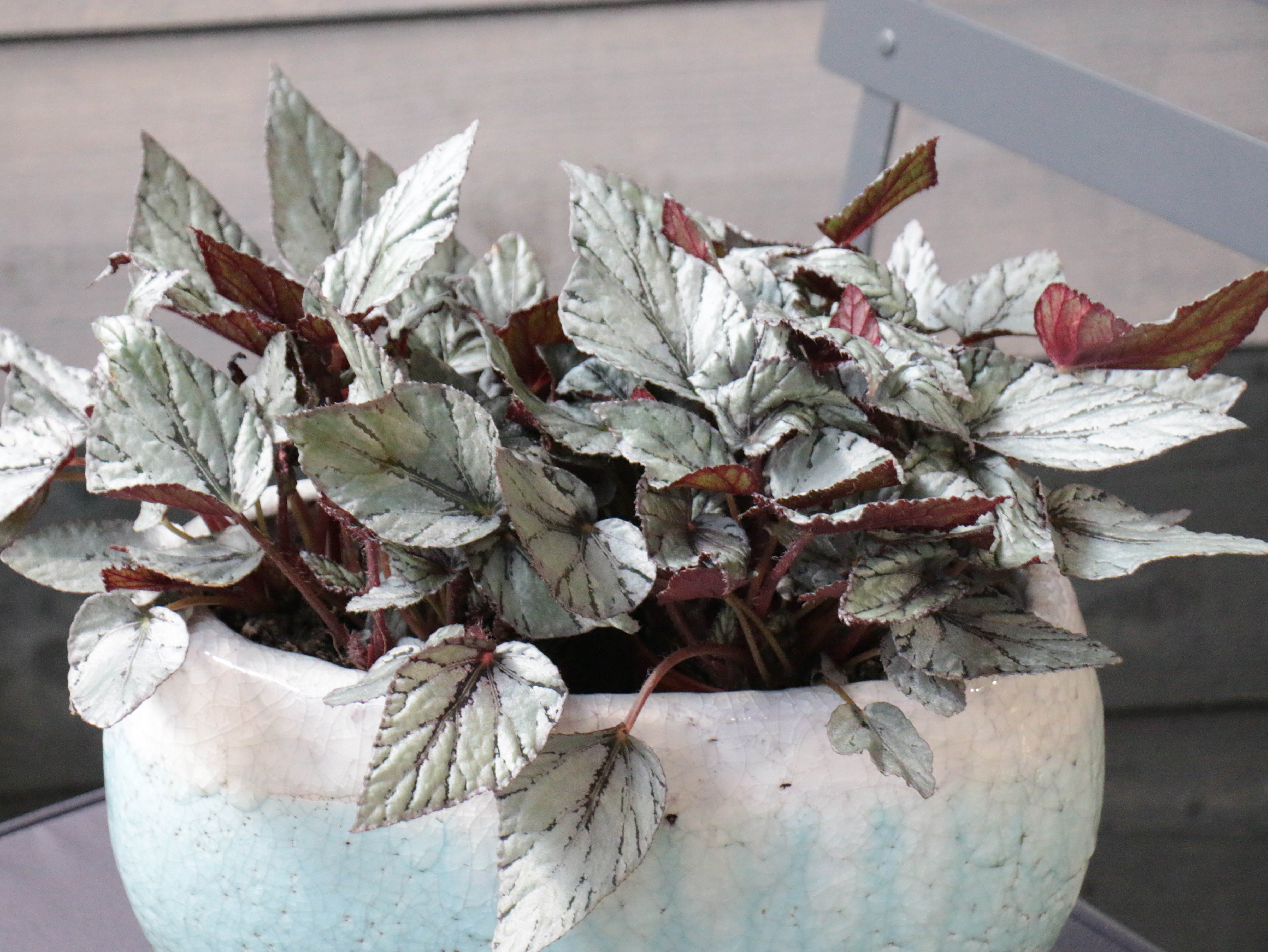
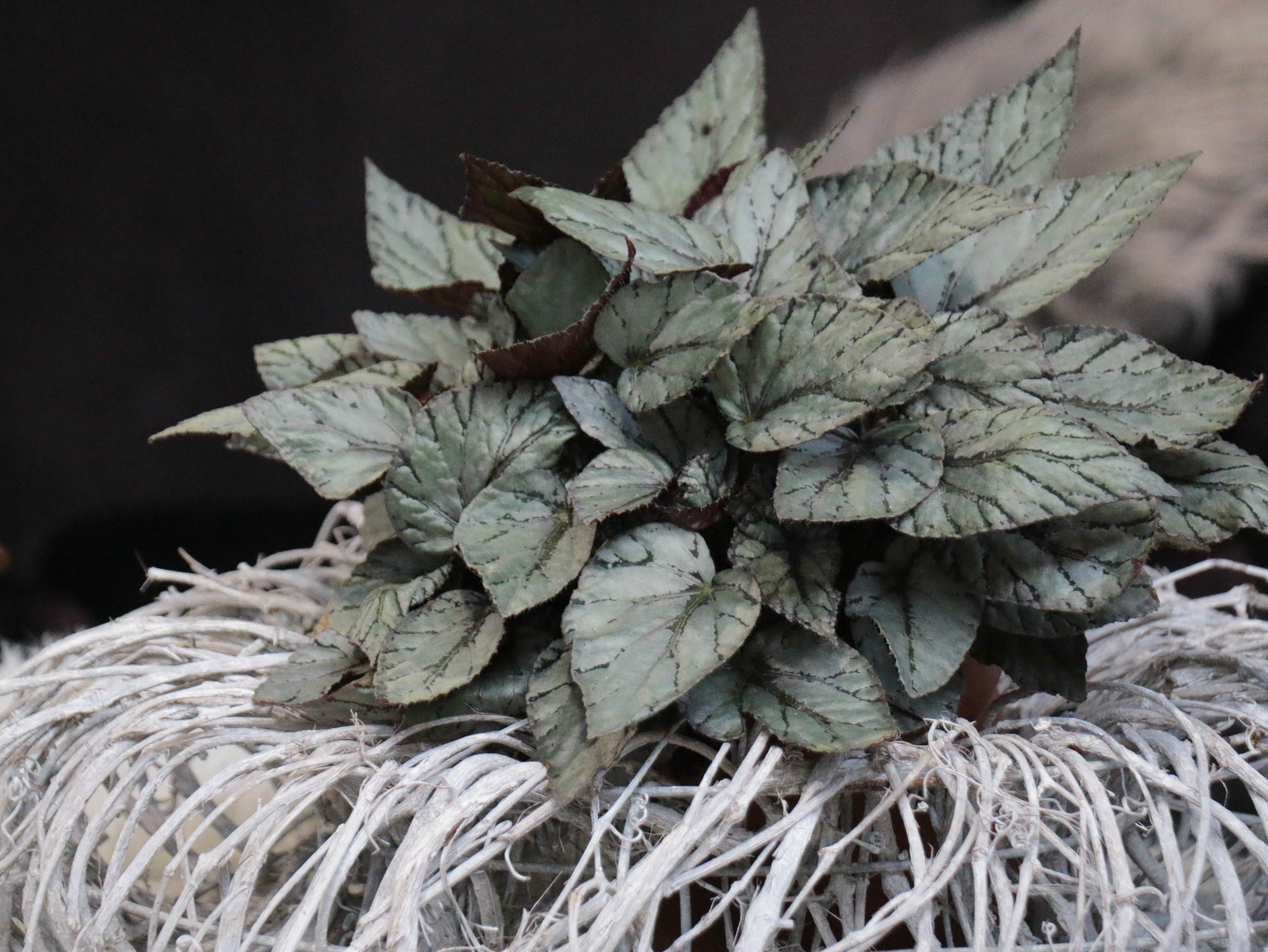
In the spotlights
This month we dedicated our FloraPodium plant edition to a very well-known plant; the Begonia. When you say Begonia, most people think of the time-honored houseplant with the red flower. A real "grandma" plant, because our grandmothers loved it! Frankly, many people find it a bit of a dusty and old-fashioned plant and there is less demand for it nowadays. But the Begonia we are talking about is very different! We would like to introduce you to the Begonia Rex; a beautiful, trendy leaf begonia with a surprising number of different designs and a beautiful color palette which is reflected in the different leaves. No bloomers, but strong and very decorative houseplants. Last week we visited Jaro Berghoef, owner of Berghoef Plants, a nursery growing 14 different types of Begonia Rex, of which we were particularly drawn to the Arctic Breeze.
Berghoef Plants
Berghoef Plants is a family business that was founded in 1913. Since then, several generations have been at the helm and several completely different crops have been produced. Willem Spaargaren started growing strawberries and boxwood in 1913. In 1948 Jacob Berghoef joined, the company’s name was changed to Spaargaren & Berghoef and they switched to Kalanchoe and Cyclamen. The next generation, Wim and Klaas Berghoef, continued the company, after which Wim led the company alone since 1991. From that time on, the Begonia Rex made its appearance. After having been active in a number of different locations, the company is now active in a single location in the Kwakel with 18,000 m2 and they focus 100% on the cultivation of this Begonia Rex.
Begonia
Begonia is a genus of the Begonia family (Begoniaceae). There are more than a thousand species, making her one of the largest genera in the plant world. Originally, Begonias come from moist, warm areas in a wooded area, especially in the tropics. The name Begonia is derived from the name Bégon. A French botanist Charles Plumier named the plant in tribute to Michel Bégon, who was governor of Haiti and patron of Plumier at the time
In the spotlights
The Begonia Rex is known as the leaf begonia. The word "rex" is translated from the Latin "king". These Begonias have different leaf motifs in different colors, but no flowers. They come with pink, green, red and even silvery leaves, in various combinations and patterns. Curly leaves or hairy leaves are also possible. At Berghoef Plants, 14 different varieties are currently grown under their own trade name "Beleaf". The Arctic Breeze in particular caught our attention; a beautiful full plant with beautiful silver-colored pointed leaves with a clearly visible vein. The top layer even seems to have a bit of a metallic sheen to it; very special. The leaf begonias, and in particular this Arctic Breeze, fit perfectly with the current trend, in which a lot of attention is paid to beautiful tropical plant species with special leaves. The gray, metallic top is therefore a real eye-catcher.

Care
Place the leaf begonia in a light spot, but not in full sun. This is especially important during the summer months, as it can burn otherwise. It prefers to stand at temperatures between 15 and 25 degrees and out of draft. The more light the plant gets, the more water it needs; so how much water you have to give depends on where you put it. The plant loves to have a bath, and likes plant food once every two months. The plant continues to grow, which means that it is best to regularly remove the old, damaged leaves. This gives the new leaf, which grows underneath, the chance to grow further.
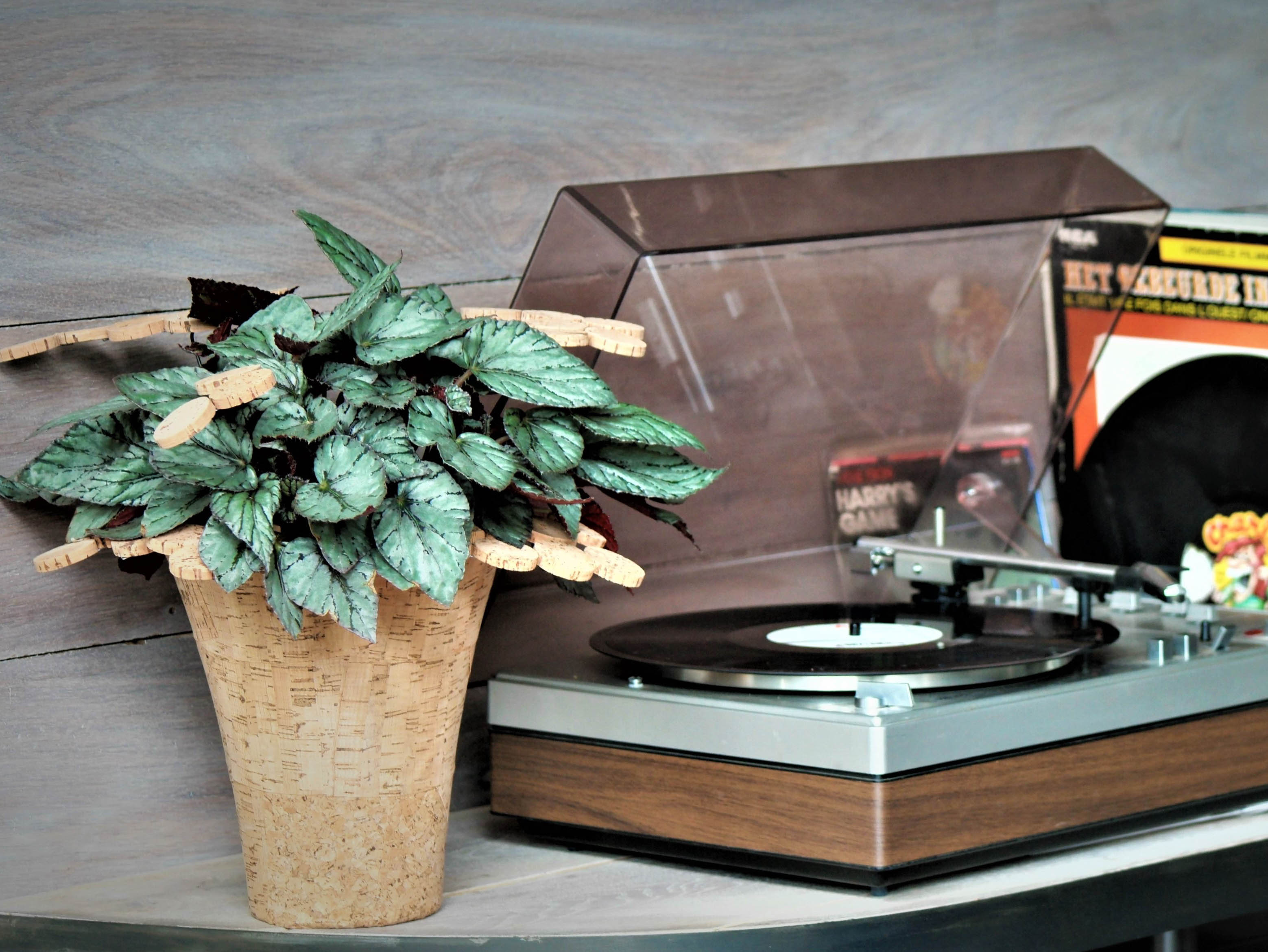
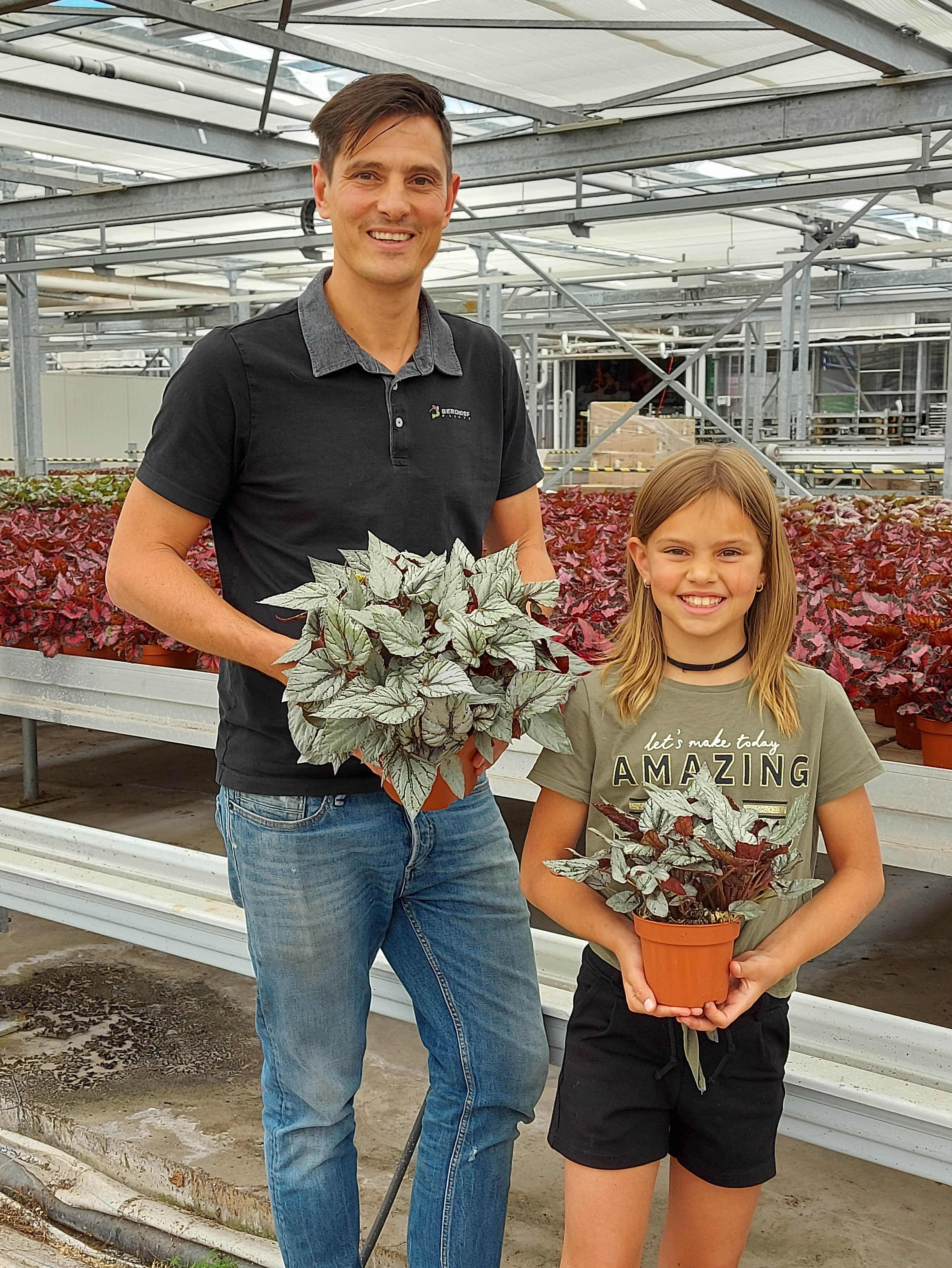
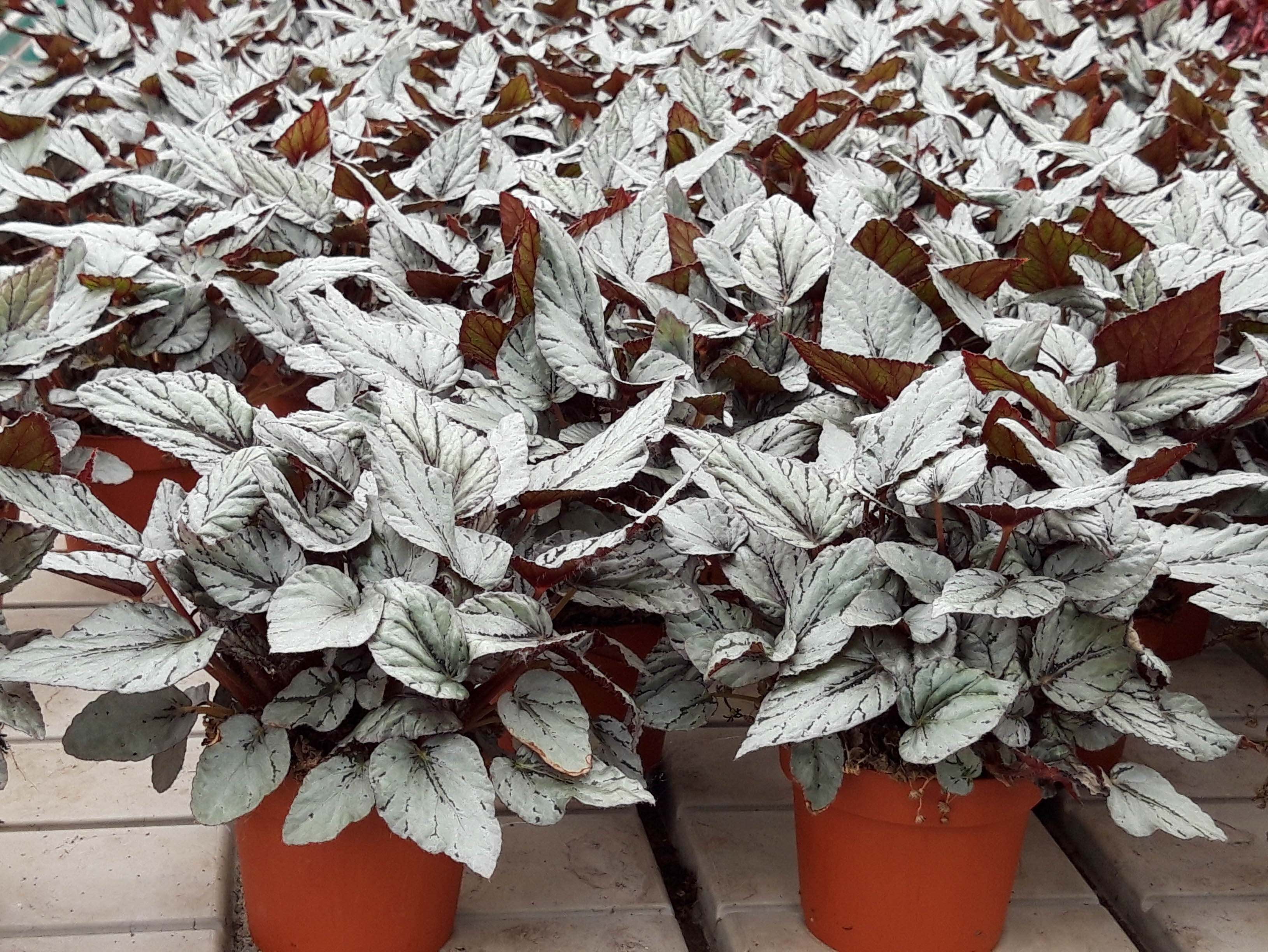
Cultivation
Jaro buys leaf cuttings from the company M. Koppe BV, who take care of the breeding and propagation. Together with Koppe they determine which species they want to produce; new species are tried out first.
Leaf cuttings
In the past, Berghoef also had more varieties in its range, but they decided to keep the range more limited, to drop the somewhat weaker varieties, so that they could better focus on the quality of the remaining varieties. The Koppe leaf cuttings are planted per 3 in a pot, so that the final plant becomes nicely full. This is still done by hand. As we could also see while we were there, it is difficult to automate this process; you have to make sure that the stem is put in the soil and it is still too difficult for a machine to recognize the stem. But it is being worked on, so who knows, there may be a machine that can do this work in the near future. They grow three different pot sizes; almost 95% of the plants are sold in pot size 12. The other 5% has pot size 9 or 17. From cutting to plant it takes 16 weeks when growing a plant with pot size 12, and it takes another 8 weeks, so total 24 weeks, for pot size 17. Over the years they have learned to grow a very nice compact plant because of the right mix of nutrition, temperature and light.
Good to know
According to Jaro, the Begonia still has the image of a fragile plant. Where exactly that comes from is hard to tell. The flowering Begonia may be a bit more fragile than its leafy brother, but the Begonia Beleaf that comes from Jaro's nursery is very strong! The beautiful full plants have sturdy leaves and with a little attention can survive for a long time and remain beautiful; so highly recommended. And if the plant may accidentally get a little too dry, they usually revive completely when they are watered and fed again.
Durability
Berghoef Plants attaches great importance to sustainability. Jaro emphasizes that the Begonia Rex is a plant with a very low carbon footprint! For example, they are very economical with energy by using a CHP installation where gas is converted into both electricity and heat within one and the same process. Most of the electricity is sold back to the energy company and the heat is used to heat the greenhouses or is stored in a buffer tank with water. This warm water can also be used at another time to heat the greenhouse without having to use the CHP or the boiler.
Another note worthy fact is that they discharge 0% water; all the water is recycled! Rainwater is collected and purified and stored in a freshwater source underground.
Furthermore, they do not use pesticides; all control is done with biological means. For example, pests are controlled with predatory mites and, if necessary, biological preparations are added to the water.
FloraPodium, 15 June 2020

